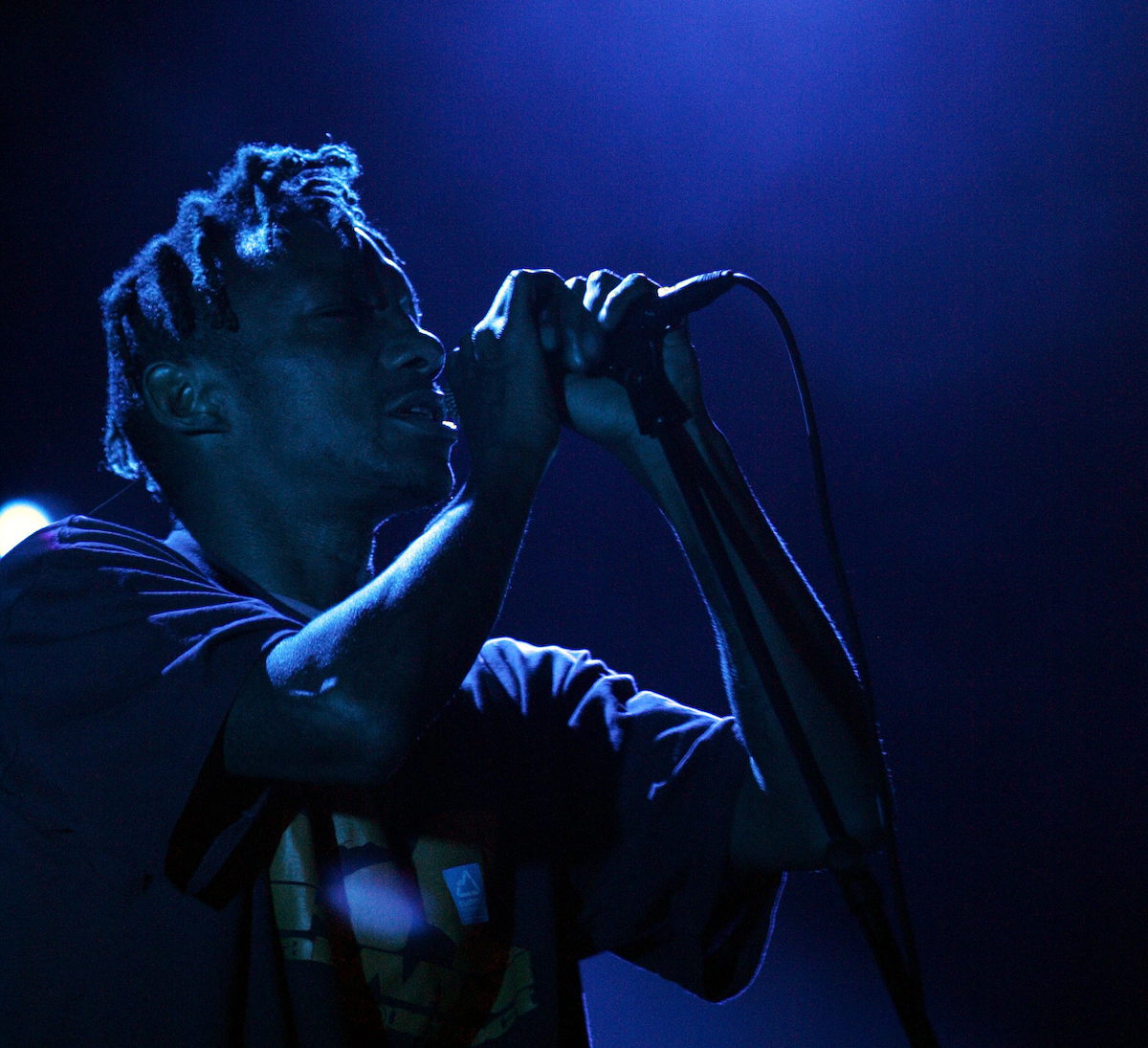

Exploring Trip Hop: A Sonic Journey through Definition, History, and Influential Artists
Table of Contents
Introduction
In the vast realm of music genres, one that stands out as an enigmatic and evocative entity is trip hop. This genre, characterized by its blend of electronic beats, downtempo rhythms, and a myriad of atmospheric elements, has left an indelible mark on the music landscape. From its humble beginnings to its widespread influence, trip hop has captured the hearts of listeners and continues to intrigue new generations. This article embarks on an exploratory journey through the essence of trip hop, delving into its definition, tracing its historical roots and development, exploring related genres, and highlighting influential bands and albums that have defined the genre.
Defining the Trip Hop Sound
At its core, trip hop is a genre that defies easy categorization. It’s a hybrid sound that emerged from the electronic and hip-hop scenes, blending together an eclectic range of influences. Trip hop is known for its downtempo beats, often hovering around 90 to 110 BPM, creating a relaxed yet engaging sonic experience. It marries electronic production techniques with elements of hip-hop, jazz, soul, and ambient music, resulting in a moody and atmospheric sound that can transport listeners to otherworldly realms.
The term “trip hop” itself is believed to have been coined by journalist Andy Pemberton in a review of the album “Dummy” by Portishead in 1994. The name aptly captures the genre’s ability to take listeners on a mental journey, often accompanied by a contemplative or introspective mood.
Tracing the Roots: The History and Development
The Origins: The inception of trip hop can be traced back to the early 1990s, when the city of Bristol, UK, served as a fertile ground for musical experimentation. This city’s underground club scene became a breeding ground for innovative artists seeking to break free from conventional genre boundaries. The influences of hip-hop’s rhythmic intricacies, dub’s textural richness, and the nascent electronic music culture converged, giving birth to a sound that defied categorization.
Massive Attack: Pioneering the Sound: A name that stands tall in the annals of trip hop history is Massive Attack. The release of their debut album “Blue Lines” in 1991 marked a pivotal moment for the genre’s evolution. This groundbreaking work introduced a mesmerizing blend of smooth rhythms, soulful vocal samples, and an urban aura. Tracks like “Unfinished Sympathy” encapsulated the genre’s potential to resonate emotionally while delivering intricate production techniques.
Portishead’s “Dummy”: Redefining Trip Hop: The year 1994 witnessed a significant turning point with the release of Portishead’s “Dummy.” This album not only redefined trip hop but also garnered acclaim that extended far beyond its genre’s boundaries. The haunting vocals of Beth Gibbons, paired with Geoff Barrow’s meticulous production, created an atmosphere that was both dark and cinematic. Tracks like “Sour Times” and “Glory Box” showcased the album’s ability to evoke deep emotions through its fusion of melancholic melodies and inventive production.
Tricky’s Gritty Edge: Tricky, a collaborator on Massive Attack’s “Blue Lines,” emerged as another defining figure in the genre’s development. His debut album “Maxinquaye” (1995) brought a gritty and experimental edge to trip hop. Tricky’s unique blend of hip-hop, punk , dub, and industrial music elements presented a darker and more enigmatic side of the genre. The album’s amalgamation of haunting vocals and dissonant textures resonated with those seeking a more unconventional sonic experience.
Bristol Sound and Urban Aesthetics: The emergence of the “Bristol Sound” emphasized the city’s pivotal role in shaping trip hop. This subgenre embraced a more diverse sonic palette, blending elements of trip hop with reggae, funk, and even rock . Acts like Portishead, Massive Attack, and Tricky exemplified the urban aesthetics that characterized Bristol Sound, where introspection met urban decay in a mesmerizing sonic landscape.
Diverse Inspirations and Global Influence
DJ Shadow’s Sonic Mosaic: The United States made its mark on the trip hop landscape with the emergence of DJ Shadow. His debut album “Endtroducing…..” (1996) revolutionized sampling and manipulation techniques, crafting an entire album from a rich tapestry of samples. This intricate sonic mosaic showcased trip hop’s potential to create immersive experiences that blurred the lines between composition and collage.
Traversing Cultural Boundaries: While the genre found its roots in the UK and the US, it transcended geographical borders. DJ Krush, hailing from Japan, added a distinctive Eastern flavor to trip hop. His album “Meiso” (1995) skillfully merged traditional Japanese sounds with the genre’s characteristic beats, resulting in an album that resonated with a global audience.
Influential Artists and Defining Albums
The landscape of trip hop is adorned with visionary artists who have not only defined the genre but also reshaped the contours of modern music. Their groundbreaking albums remain as milestones that continue to resonate with audiences across the globe.
Massive Attack – “Mezzanine” (1998): Building upon their previous successes, Massive Attack’s “Mezzanine” stands as a testament to their evolution and innovation. The album’s dark and brooding atmosphere, coupled with its intricate production, showcased the band’s ability to capture emotions through sound. Tracks like “Teardrop” featuring Elizabeth Fraser are prime examples of how Massive Attack expertly combined ethereal vocals with hypnotic beats to craft an otherworldly experience.
Tricky – “Maxinquaye” (1995): Tricky’s debut album, “Maxinquaye,” emerged as a force that defied conventions. This album, named after his late mother, delved into the depths of his emotional psyche, resulting in a sonic tapestry that intertwined trip hop with elements of punk, dub, and soul. Tracks like “Hell is Round the Corner” epitomize Tricky’s ability to infuse raw emotion into his music, blurring the lines between genres and leaving an indelible mark on the genre’s history.
Portishead – “Dummy” (1994): Portishead’s debut album “Dummy” not only gave the genre its name but also etched their name in trip hop history. The album’s haunting beauty, juxtaposed with melancholic undertones, created an atmospheric landscape that left listeners captivated. Songs like “Glory Box” and “Sour Times” showcased Beth Gibbons’ distinctive voice and the band’s mastery of tension and release, setting the bar for emotional depth within trip hop.
Morcheeba – “Big Calm” (1998): Morcheeba’s sophomore effort “Big Calm” epitomized the genre’s ability to fuse electronic beats with soulful melodies. Skye Edwards’ sultry vocals combined with lush arrangements, producing an album that perfectly encapsulated the laid-back yet emotionally charged essence of trip hop. Tracks like “The Sea” and “Part of the Process” exemplify Morcheeba’s signature sound that resonated with a wide audience.
DJ Shadow – “Endtroducing…..” (1996): DJ Shadow’s debut album “Endtroducing…..” rewrote the rules of sampling and composition. This instrumental masterpiece showcased his expertise in crafting intricate sonic collages from an extensive range of samples. The album’s immersive quality and attention to detail earned it a place among the most influential records in trip hop history, inspiring a generation of electronic music producers.
UNKLE – “ Psyence Fiction ” (1998): UNKLE, spearheaded by James Lavelle, delivered a genre-defying experience with “Psyence Fiction.” Collaborations with diverse artists like Thom Yorke of Radiohead and Richard Ashcroft of The Verve resulted in an album that pushed the boundaries of trip hop. Tracks like “Rabbit in Your Headlights” combined haunting vocals with intricate electronic arrangements, reflecting UNKLE’s exploration of the genre’s sonic potential.
Legacy and Beyond
The enduring influence of these artists and their defining albums has paved the way for future generations of musicians and producers. As the genre continues to evolve, the spirit of experimentation and sonic exploration remains at its core. From the introspective moods crafted by Portishead to the experimental fusion of Tricky and the sonic landscapes painted by Massive Attack, the legacy of these influential artists is a testament to the lasting impact of trip hop on the world of music.
Continued Influence and Modern Resonance
Chillwave’s Dreamy Revival: In the 2000s and beyond, trip hop’s influence reverberated across genres like chillwave . Acts like Washed Out and Tycho incorporated trip hop’s dreamy soundscapes into their own music, infusing it with modern electronic sensibilities. This revival demonstrated the enduring appeal of trip hop’s atmospheric allure.
Lo-fi Hip Hop’s Digital Oasis: The digital age ushered in a new era of lo-fi hip hop beats, often accompanied by captivating visuals. These beats drew heavily from trip hop’s relaxed rhythms, offering a backdrop for study sessions, relaxation, and contemplation. Online platforms became havens for these beats, with creators curating seamless mixes that captured the essence of trip hop’s tranquility.
Unraveling Trip Hop’s Legacy
As the journey through trip hop’s rich history unfolds, it becomes clear that the genre is far more than a musical classification. It’s a tapestry of diverse influences, a testament to the power of sonic exploration. From Massive Attack’s pioneering endeavors to Tricky’s enigmatic soundscapes and Portishead’s emotional depth, trip hop has left an indelible mark on the world of music. Its evolution continues to inspire artists across genres, reminding us that music’s capacity for innovation knows no bounds. Whether experienced in dimly lit clubs or through headphones in quiet solitude, trip hop invites us to traverse its textured landscapes and embark on a sonic journey that defies conventions and expectations.
- Skip to main content
- Keyboard shortcuts for audio player
Local Groove Does Good: The Story Of Trip-Hop's Rise From Bristol
Vivien Goldman

The Wild Bunch — soon-to-be Massive Attack — at the Dug Out Club in Bristol. Photo by Beezer hide caption
The Wild Bunch — soon-to-be Massive Attack — at the Dug Out Club in Bristol.
Sinuous and mysterious as a plume of drifting smoke, a new sort of groove wafted two decades ago from Bristol, a bohemian university town in the west of England. Though its prime movers — Massive Attack , Tricky and Portishead — all loathe the term, the word "trip-hop" has become synonymous with the style created by Bristol bands like Massive Attack and Smith & Mighty. The sensuous groove fulfilled a timeless human need for a bass-heavy sound to touch the secret recesses of the imagination and lure our dreamworld onto the dance floor. Trip-hop was tailor-made for the moment — and it happens every night — when a bopper wants to get tender. Or when domestic listeners seek to wander within themselves.
Not all local grooves take flight, but trip-hop most certainly did. Over the next two decades it was re-imagined as chill-out, downtempo, illbient and lounge music. Its subtle tendrils have woven into music round the world: Washington, D.C.'s Thievery Corporation , with their exotic cosmopolitan edge; drifty Brazilian sounds like Ceu , whose dulcet lilt earned her maximum market penetration (a Starbucks CD); London's Ninja Tunes' artists like Bonobo and Berlin's techno-tinged Sonar Kollektiv. As music writer Simon Reynolds notes, "People like Flying Lotus and Gonjasufi on the West Coast are doing trippy hip-hop. Though it's not quite the same thing, they probably are the inheritors of the spirit of Massive Attack, Tricky, Earthling and DJ Vadim."
To qualify as true trip-hop, music has to share the sense of opiated mystery of Tricky's tantalizing mumbles on the classic album, 20 years old last year, that launched trip-hop worldwide, Massive Attack's Blue Lines. Its magical " Unfinished Sympathy ," cast a spell over the world's clubbers. Produced by Nellee Hooper (later of Soul II Soul and Bjork , among many others) the well-timed sound was just one manifestation of a movement taking place in Bristol at that time.
Scene initiators included Smith & Mighty and the DJ collective The Wild Bunch, from which came Massive Attack and Tricky. The Pop Group's volatile post-punk added another element to the scene, later splitting into the savage free explorations of Float Up C.P. and horn-happy Pigbag.
Bristol fed off its slave port for hundreds of years; now it's one of Britain's blackest cities, culturally and socially. It's long been home to a West Indian community, and shebeens and sound systems were a way of life for all music-loving Bristolian youth. Being a port, Bristol was always awash in hashish and other plant-based mind-benders like marijuana — not to mention more macrobiotically sound, locally-grown life-enhancers like scrumpy cider and hallucinogenic mushrooms (legal back then) grown in the surrounding countryside — that undoubtedly fuelled Bristol's music scene.
Much of this musical experimentation took place at a club called The Dug Out. As Hooper has said, "The Dug Out couldn't have had a better location, at the top of the hill from St Paul's — the heart of the black music scene — and just down the hill from Clifton and the trendy punk/art scene. It was just dangerous enough for trendies to feel edgy, music cool and edgy enough to confuse and enthuse the dreads ... perfect!"
Disclosure: I got a chance to explore Massive Attack's creative process first hand over a few years. What follows is a typically incestous Bristolian saga. The links between town and gown — the students and the locals — plus the charming city's many liberal artsy types, made for a scene with a hectic social, creative and romantic dynamic.
Blue Lines was born in an upstairs bedroom of the terraced West London home of Afro-Swedish hip-hop diva Neneh Cherry and her producer husband, singer Cameron McVey. Before her solo hits began with " Buffalo Stance ," Neneh sang with Float Up C.P., and as her first husband was Bruce Smith (drummer for the Pop Group and The Slits, with whom Neneh also sang), Bristol was yet another home to her. The young Massive Attackers, Daddy G, 3-D, Mushroom and Tricky, became Cherry and McVey's protegés. They took over the small side bedroom, soon cluttered with reel-to-reels and tape machines, and a record deck on which they would earnestly sift through possible samples. A superb chef, my friend Neneh would be in the kitchen concocting feasts in between writing rhymes, with Massive Attack wandering in for cups of tea.
Years later, after the band had released Blue Lines and were preparing the album that became Protection , I visited Bristol to collaborate with them, eventually co-writing the track " Sly ." Sample-based songwriting in those pre-digital days could be laborious. I bought a child's Casio keyboard to help fill the gaps, which came in handy for "Sly," but the process often involved someone getting on their bike and cycling down to the second-hand record shop to try and locate half-remembered grooves that might be just right to fulfill the elusive conception of a song.
Bring back the bike, because the tunes the Massives assembled by hand, between cups of tea, opened a poetic, evocative, emotional vein of music, which is still connecting hearts today.
10 Key Trip-Hop Tracks
Neneh cherry on "lately" by massive attack.

From 'Blue Lines'
By Massive Attack
Sonically, it's the ultimate trip-hop track, really beautiful. When they were working on it in our house in Mortimer Road, West London, I remember lying in bed hearing it floating round the house and the feeling of being a silent witness to something really great happening. It would send me off into a beautiful dream space sleep. What I love about trip-hop is the bottom end, the sexiness of the downbeat which also gives it a blues-y sort of melancholy. It's the English interpretation of hip-hop, bringing the bass and bottom end from reggae into it. Why Bristol? All the people I know from there are hardcore individuals. It breeds some eccentric thinkers.
Singer-songwriter NENEH CHERRY is an anchor of the Bristol scene. She sang with The Slits, Float Up C.P. and is now with the band CirKus. She is working on two new albums.
Ray Mighty on "Anyone" by Smith & Mighty

From 'DJ-Kicks'
By Smith & Mighty
To hell with false modesty!
RAY MIGHTY is half of the production duo Smith & Mighty.
Rob Smith on "King Tubby Meets the Rockers Uptown" by Augustus Pablo

From 'King Tubbys Meets Rockers Uptown'
By Augustus Pablo/King Tubby
To be very honest, we all hated the term 'trip-hop'! The phrase was coined, I believe, by a non-Bristolian journalist, Dom Phillips, who in my mind was very underqualified to be making any opinions about the scene at that time. I remember we played with Tricky at Hammersmith. During Tricky's set, he shouted, "Who likes trip-hop?" A few people in the audience shouted, "Yaee!" and he replied, "Well f--- off home then!"
Bristol artists were not afraid to mix and blend styles, thus coming up with fresh sounding tunes. Also Bristol is far enough away from London that there wasn't the same need to compete or chase trends. Bristol had its own pace and tunes were often left to stew longer.
ROB SMITH is half of the production duo Smith & Mighty.
Mark Stewart on "Aftermath" by Tricky
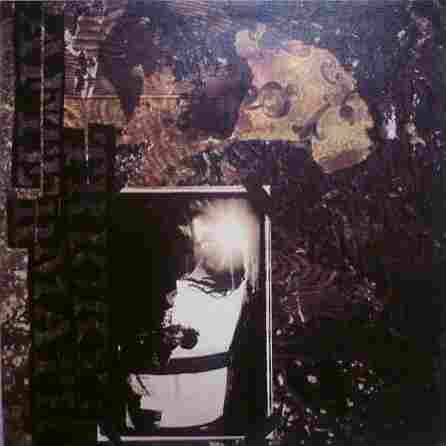
From 'Aftermath EP'
His first single. I made it with him and Martina Topley-Bird. We were desperate for a girl singer. 8 o'clock in the morning, stopped at some traffic lights on the way to the studio. Two school girls in their uniform at a bus stop — me and Tricky shouted across saying, "Can either of you sing?" Martina said yes, and two stars were born: Tricky and her.
The Wild Bunch (as well as 3D, Daddy G, DJ Milo, Willie Wee and Tricky Kid) — my boys. They call me The Godfather, but in fact some of them are older than me, I just started making music when I was 16.
Big up the mad skillz of generation next Bristol bass of Appleblim, Kahn and Joker dropping science — the new kids from Bristol.
MARK STEWART is the singer for The Pop Group and Mark & the Mafia. His new album, The Politics of Envy , will be released in March and includes collaborations with Primal Scream and others.
Bruce Smith on "Glory Box" by Portishead

From 'Mysterious Heads'
By Portishead
"Glory Box" is a GREAT record, very sexy. I associate that track with sex. And Tricky's first album is very good, very creative. I think the genre is interesting as it is a particularly English take on a North American cultural phenomenon. In Bristol the West Indian influence is huge, so the interpretation of hip-hop — an aggressive music — was made from that perspective, with the influence of dub being the key element.
I spent my late teens absorbed by reggae in Bristol. Had an enormous effect on me and still does in the way I play the drums to this day.
BRUCE SMITH is the drummer for The Slits, The Pop Group and Public Image Limited.
Dick O'Dell on "Karmacoma" by Massive Attack

From 'Protection'
Trip-hop happened in Bristol because of the strong West Indian community from slave trade times combined with middle class white boyz getting seriously spliffed up in the Dug Out!
DICK O'DELL was the manager of The Pop Group and now manages Bat for Lashes.
Cameron McVey on "Any Love" by Massive Attack

From 'Singles 90/98'
It was the very first Massive Attack 45, before me and Neneh started working with them. Smith & Mighty produced it, who I was trying to work with at the time, with Chris Parry, the manager of The Cure. I love Portishead too, and I'd also like to pick Horace Andy's "One Love," with Massive Attack .
Trip-hop was born in Bristol because a lot of 6' 5" Masai warriors must have jumped ship during the slave trade! That's why Bristol has street names like Black Boy Hill and White Lady Road. Bristol is where reggae mixed with hip-hop. It's mad. It's so profound.
CAMERON MCVEY is a singer, songwriter and producer for Neneh Cherry, CirKus and more.
Beezer on "Small World" by Smith & Mighty

From 'Big World, Small World'
The Dug Out was a meeting spot for the ghetto and Poshville where black and white would hang out. We were there almost every night, playing disco, funk and punk. It was our Studio 54, and it put Bristol on the map. We were totally into dub and reggae; it was an amalgamation of cultures with no barriers.
We didn't know we were part of something that would be influential later, but even at the time it felt like something special was going on, although it was still just, like, going out on a regular Wednesday night.
BEEZER is a photographer who chronicled trip-hop in the mid-'90s.
Tessa Pollitt on "Unfinished Sympathy" by Massive Attack
I choose everything dear ol' Tricky has put out. The Slits were often in Bristol and I have always loved and respected the "Brizzle" scene. So much innovative music and talent has come from there and has influenced following generations musically.
Let's face it, reggae from Jamaica has influenced us all in the U.K. from old steppers to jungle, drum and bass, dubstep, trip-hop, grime etc. The original rapper was U Roy, [J.A].
But Bristol has something special about it. Must be the Ley Lines (lines of energy running beneath the earth) and the huge hills you have to climb like in San Francisco. And probably the amount of Jamaicans that came here way back in the windrush era, 1950s.
TESSA POLLITT is bass player for The Slits.
Martina Topley-Bird on "Aftermath" by Tricky

From 'Maxinquaye'
It's the only Tricky song I recognize as a trip-hop song (still hard to write those words even now), and it was our first single. Mark Stewart was there. I'd just turned 16. Recorded in a squat studio in Bristol.
I arrived in Bristol when I was 13. I like that Bristol is really mixed racially, more so than anywhere else in England, even London, for me at the time. It was smaller and there were no great swathes of land for people to be segregated to.
I think how it's laid out as a city has its own effect on the psyche of its dwellers — and the weather. Back then it was England before shops were open on Sundays. Some parts were melancholy, and some parts were bleak. But the suspension bridge was beautiful and the gorge. It has history as a slaving port too.
It was the generation before me that started making this music though. I heard more than I saw with my own eyes about Blues dances and Sound Systems.
MARTINA TOPLEY-BIRD is a vocalist with Tricky and Massive Attack. She's working on new material now.
- Massive Attack
- Augustus Pablo
Trip Hop: The Evolution from The Underground
A brief history of trip hop.
The city of Bristol, United Kingdom has been the epicenter for a multitude of musical movements, including sparking the flame of the trip hop sound. In short, trip hop fuses the organic worlds of funk, soul, and jazz with psychedelic electronica timbres designed to invoke emotions deeper than traditional hip hop.
While artist like sample-based hip hop don DJ Shadow were getting busy stateside in crafting that goes deeper than east coast boom bap or west coast G-funk, the multicultural center of activism Bristol, UK was flaring with a new movement: trip-hop aka downtempo.
Trip-hop swerved from the mainstream appeal of hip hop where graffiti, breakdance, and hip hop were the cultural norm. Instead, style of music with big appeal in the UK underground at the time, namely breakbeat, helped this genre unfurl. Breakbeat is simple “broken beats”, which originate from jazz and funk and evolved into trip-hop, jungle, drum n bass, funky breaks, etc.
What’s the Difference between Downtempo and Trip Hop?
Trip Hop is of Bristol, UK origin from the late 80s/early 90s and embodies breakbeat influence, while keeping the psychedelic nature in the lyrics and instrumentation. “Downtempo” is of Ibiza, Spain origin which retains an ambient nature dedicated to chill-out spaces in the Ibiza clubs.
There’s a difference in the feel of the two sibling-genres, as well, despite their differences. Both include ambient and psychedelic textures but are separate rhythmically.
Stay up to date.
New music and exclusive updates in your inbox weekly.
Classic Examples of Trip Hop
Probably one of the most prominent trip hop groups out of Bristol, UK who started in 1991. Most known for their hit track "Glory Box", this trio paved the way for an entire modern sound.
Among the first North American voices in trip hop where DJ Shadow out of the Bay Area brought together sample-based hip hop with psychedelic undertones. Tracks like "Midnight in a Perfect World" off of his 1996 album Endtroducing.... remains an identifiable track within his catalogue
Massive Attack
The originators of the trip-hop movement, the Massive Attack duo out of the Bristol, UK area have shaped the culture with their heavy instrumentals and epic melodies. Tracks like "Teardrop" off of their 1998 album Mezzanine remains their most streamed track on Spotify.
While the above acts covered the golden years of trip hop in the early and mid nineties, American producer RJD2 is a voice from the early 2000s. His most recognizable tune is "Ghostwriter" off of his 2002 album Deadringer .
Where Is Trip Hop Going?
It's dwindling...Or is it?
Trip-hop has now been absorbed by other styles since its inception. Google Trends shows the biggest activity from the beginning of its own history. Naturally, this is because trip-hop was popular before search engine's existence.

But now, the musical landscape has grown into a colorful vine of sub-genres and spin-offs. While the search trends for trip-hop go down, it isn't to say that it is dying. It is rather changing. New modes of trip-hop style from psy-dub, to lo-fi hip hop, to glitch space bass are the branches of the trip-hop tree that are now flowing out.
Modern Examples of Triphop + Spin-Offs
The trip hop influence has unwound into various sub-sects of electronic music showing us the results of its evolution through time. Below are examples of up and coming artists who all embody the trip hop sound
Seppa - Bass Infused Trip-Hop
This track comes from a producer who lives in the very region trip-hop was born. The city of Bristol, UK is known for its eclectic nightlife and celebrates innovation in music. Kind of like a silicon valley for huge tunes. Producer Seppa brings a searing edge with massive sound designs that often come with trip hop style beats, drum n bass, or half-time grooves.
Read more about Seppa in our our interview with him .
il:lo - Trip-Hop With World Sounds
This French duo bring lots of world music sounds and synths to their blend of trip hop inspired tunes. Expect vast soundscapes and beautiful vocal pads from releases like their 2019 Sloh.
Discover more about il:lo in their mini mix and interview on Stereofox .
Nym - Cinematic Downtempo
Durham, NC producer Nym is a storyteller. He combines many aspects, from film samples, to worldly percussion and instruments, to vocals and mixes them into an ethereal experience that certainly puts the "trip" in "trip hop". Check out the title-track to his 2019 album:
Somatoast - Psy-dub & Trip-Hop
Psychedelic and weird is what Texan producer is all about. His tunes can't really be classified, but he certainly includes a flavor of dub, hip hop, and wonky sounds. Check out his track "Broken Bits" off of his 2019 release Live Dreaming:
Trip Hop Playlists
If you're new to trip hop, returning to it, or a big fan of it, then here are some solid windows into the genre. Spotify has a robust selection of trip hop classics in their Trip Hop playlist.
If you're looking to expand upon trip-hop and swim around in the world of ambient music, which is not exclusively limited to trip hop, check out our regularly-updated, curated Spotify playlist Ambient Space :
Join thousands of subscribers to our weekly dose of good music & articles
Mugs, t-shirts, hoodies, vinyls & more.

Related Articles

Interview: Marsh Opens Up About His New Release "Warrior", His Upbringing, and Working With Big Labels

Interview: WhoMadeWho On Taking Their Live Shows to the Next Level, Working With Rampa, Diving Into Electronic Music, and More
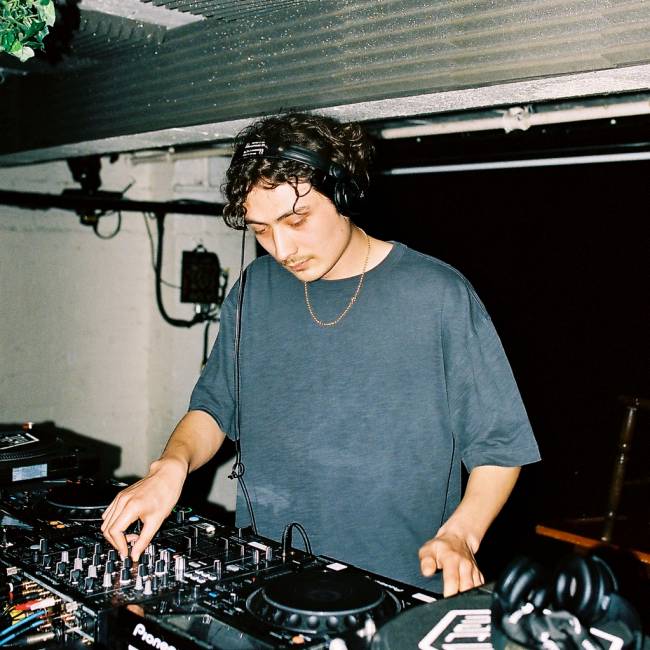
Why Is UK Garage Making A Comeback?
Tracks you might like.
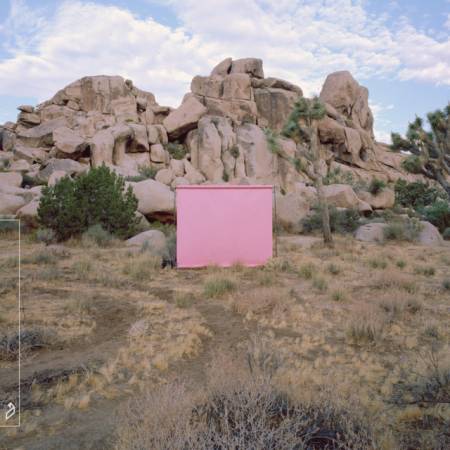
Losing Game
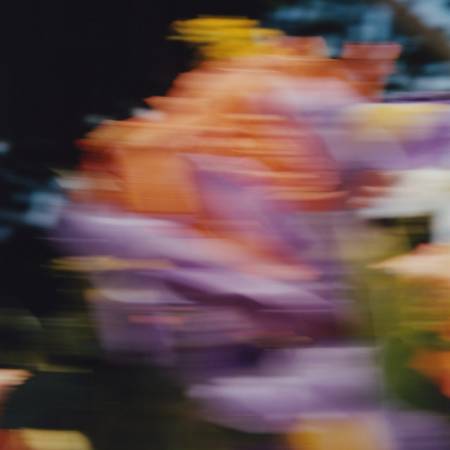
The Last Phone Call
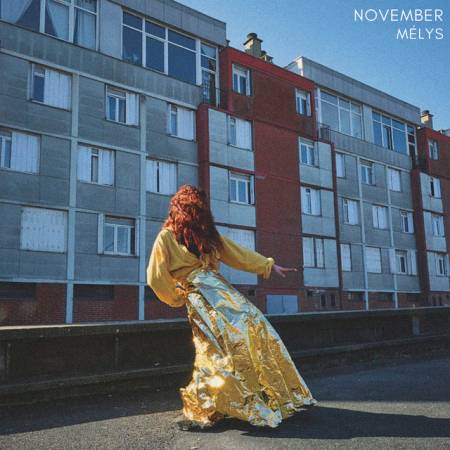
We use cookies

We use some cookies and tracking in order to provide better service. You can read all about it in our Privacy Policy.

Education , Pond5 Playlist
From bristol to your earbuds: exploring the world of trip-hop.
In the early 1990s, in Bristol, UK, an enigmatic genre emerged called Trip-Hop. Though its leading artists, including Massive Attack, Tricky, and Portishead, have openly rejected the label, the word “trip-hop” has become synonymous with the style created by Bristol bands. Here, we will discover what Trip-Hop is, why its most prominent artists oppose the term, and how you can use it in your creative projects.
WHAT IS TRIP-HOP?
Trip-Hop fuses elements of hip-hop, electronic beats, jazz, and soul to create a sound that is as melancholy as it is intriguing. Defined by its moody atmospheres, soulful vocals, and hypnotic beats, it transcends conventional boundaries, creating a unique and immersive musical experience. Take, for example, Pond5 contributor Musinova’s song Sensual 90S Trip-Hop Lofi Hip Hop . It takes you on a romantic journey through a hip-hop beat.
HISTORY OF TRIP-HOP:
As the name suggests, the term describes a sort of psychedelic hip-hop. Trip-hop is a combination of the immersive style of music with the downbeats used in hip-hop. The term “trip-hop” was first published in the early 1990s in MixMag, a prominent British dance and club music magazine. Music journalist Andy Pemberton coined the phrase while describing the sonic journey, or “trip,” experienced through DJ Shadow’s track “ In/Flux .” Despite that being the first printed reference, fans credit the genre to earlier DJ crews from Bristol. This reference is why some use “Bristol Sound” synonymously with “trip-hop”. One of the biggest DJ crews in Bristol was the Wild Bunch, who evolved into two of trip-hop’s pioneering acts: Massive Attack and Tricky.
If you’re looking for an early Trip-Hop sound, Pond5 artist nealgardner has you covered with Until My Last Breath (In The Style Of Portishead And Massive Attack).
Massive Attack’s Blue Lines
When Massive Attack released their debut album, Blue Lines, in 1991, they unknowingly created the blueprint for future trip-hop music. The album blends soul, reggae, hip-hop, and electronic music. Tracks like “Unfinished Sympathy” and “Safe from Harm” popularized the trip-hop genre.
Becoming Mainstream
In 1993, Icelandic international artist Bjork released an album called Debut. The album, produced by Wild Bunch member Nellee Hooper, contained elements of trip-hop and is credited as one of the first albums to introduce electronic dance music into mainstream pop.
Another Bristol band, Portishead, released their debut album in 1994 entitled Dummy. The following year, Dummy won the Mercury Music Prize as the best British album of the year. This accolade resulted in the most significant exposure for the Trip-Hop genre since its inception. With an influx of imitators, Portishead began to distance themselves from the trip-hop label they had inadvertently helped popularize.
Rejecting the Trip-Hop Classification
Many of the pioneering Trip-Hop artists have openly rejected the genre label. Some feel it was a term invented by record companies to create a market rather than an actual music genre. Others think the phrase is limiting and doesn’t reflect their music. And some believe it to be a cultural appropriation of hip-hop.
Contemporary Trip-Hop
Trip-Hop has continued to evolve and appears in the music of many mainstream artists like Adele, Lana Del Ray, and Billie Eilish. The further we get from the genre’s origins, the less off-putting the term has become. It is becoming a helpful classification rather than a label from which to rebel.
GENRE CHARACTERISTICS:
These characteristics can help classify a Trip-Hop song:
- Downtempo Beats: Trip-Hop often features slow to mid-tempo drum beats, creating a relaxed, dreamy groove.
- Sampling: Producers use fragments of existing music or sounds, tweaking them to craft new compositions employing a typical trip-hop method.
- Electronic Production Technologies: The genre prominently relies on synthesizers, drum machines, and digital effects in its production.
- Instrumentation: Trip-Hop embraces a diverse range of instruments, such as keyboards, bass guitars, and brass or string instruments, adding depth and complexity to the music.
- Vocals: We commonly characterize Trip-Hop by sultry or ethereal female vocals, though male voices or instrumental tracks are also typical. The vocal approach often complements the music’s somber and atmospheric tone.
- Lyrics: Trip-Hop lyrics cover a spectrum of topics, ranging from contemplative and melancholy themes to social and political critique.
THREE CREATIVE USES:
- Film Soundtracks for Moody Atmospheres: The genre’s downtempo beats and emotive undertones can enhance the emotional impact of scenes. Try a song like Trip-Hop Noir (Dark Pulsing Expansive Sexy Brooding Driving Hypnotic) Drmbss by goldcoastmusic .
- Podcast Backgrounds for Engaging Narratives: Whether it’s for intros, transitions, or ambient background music, Trip-Hop’s versatility creates immersive storytelling. A great choice might be Somber Contemplation No Drums (Cinematic, Trip-Hop, Emotional Mood Music, Sad) by HDSMedia .
- Video Games: The genre’s atmospheric qualities can underscore key moments, heightening the player’s emotional engagement. Use Trip-Hop as a tool to craft soundscapes that adapt to the narrative. Try something like [Electronic Dark Sparse] Trip-Hop Army by pimusic .
Free Track & Trip-Hop Collection
From a label no one wanted to a style that some of the world’s most prominent artists embrace, Trip-Hop has made a journey as a genre. Incorporating Trip-Hop into your creative projects can create an immersive experience and open up a realm of emotions to impact how audiences perceive and connect with your work.
A Pond5 music subscription provides access to many original Trip-Hop tracks – check out our curated collection of Trip-Hop music . Try one risk-free by downloading this complimentary track .
Related Articles
Pond5 playlist, hip hop 50: celebrate 50 years of hip hop.
From its humble beginnings in Black communities in The Bronx, New York, to its global dominance as an art form, hip hop has become a …
Education, Pond5 Playlist
Explore the imperfect charm of lo-fi music.
In a world obsessed with perfection, a quiet revolution is taking place. It embraces the raw, unpolished, and purposely imperfect. We’re talking about the fascinating …
Arabic Pop: A Harmonious Fusion of Tradition & Modernity
Electric guitar and synthesizer riffs mixed with the plucking of an oud or the rhythms of a riq are the sounds of the genre known …
- International edition
- Australia edition
- Europe edition
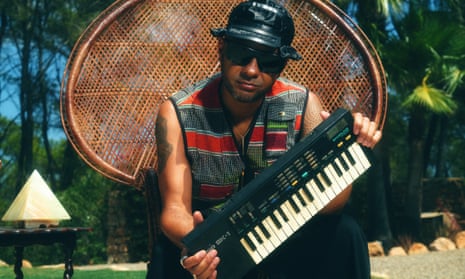
‘Music dug up from under the earth’: how trip-hop never stopped
Fused from jungle, rave and soul, trip-hop filled the coffee tables of the 90s, and is now inspiring Billie Eilish’s generation. So why is the term so despised by many?
N obody really wanted to be trip-hop. The stoner beats of Nightmares on Wax’s 1995 Smokers Delight album were era defining, but it carried the prominent legend: “THIS IS NOT TRIP HOP”. James Lavelle’s Mo’ Wax label flirted with the term after it was coined by Mixmag in 1994, but quickly switched to displaying it ostentatiously crossed out on their sleeves. Ninja Tune did print the phrase “triphoptimism” on a king size rolling paper packet in 1996, but only as a joke about escaping categories.
“I always disliked the term,” says Lou Rhodes of Lamb, “and I would always make a point in interviews of challenging its use in regard to Lamb.” Mark Rae of Rae & Christian similarly says: “I would give a score of 9/10 on the lazy journalist scale to anyone who placed us in the trip-hop camp.” And Geoff Barrow’s ferocious hatred of the term – let alone its application to Portishead – has become the stuff of social media legend.
The distaste is understandable. The template of crawling beats, cinematic strings and dubby basslines, usually with a female vocalist and weed-smoking signifiers, became one of the most ubiquitous sounds of the late 90s. The phrase itself stretched to become a catch-all for any and all downtempo music, from wafty supermarket-checkout budget CD “chillout” to highly crafted UK soul. It very quickly became the object of snobbery, called “coffee table music” by those who found the idea music could be comforting or domesticated an anathema.
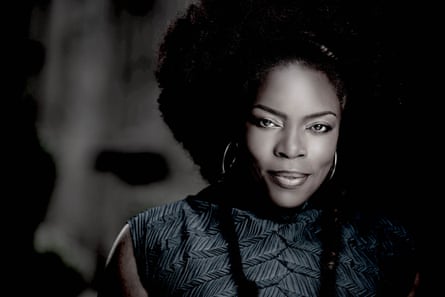
But whatever you call it, the specifically 90s downtempo vibe abides. Nightmares on Wax’s new album, Shout Out! To Freedom …, shows producer George Evelyn as committed to cosmic beats, and as inspired, as ever, and Smokers Delight got a deluxe reissue treatment last year. Martina Topley-Bird ’s Forever I Wait (featuring several productions by Robert “3D” Del Naja of Massive Attack), the reformed Sneaker Pimps’ Squaring the Circle, and even Saint Etienne ’s mostly instrumental I’ve Been Trying to Tell You all meander moodily in classic trip-hop style. Jhelisa , whose albums in the 90s easily bridged the gap between trip-hop and acid jazz, is back and on spectacularly trippy form with 7 Keys V.2, too.
And perhaps even more significantly, younger musicians are channelling the sound. Some of the most high-profile acts in the world – Billie Eilish, Lana Del Rey, Lorde – are unabashed in these 90s references. Alicia Keys’ new single, Best of Me, couldn’t be more trip-hop if it was made in a smoky Bristol basement in 1995. In the leftfield, acts such as Young Echo, Tirzah and Space Afrika explore some oddly familiar dark, dubby spaces, the latter citing Tricky as a key precedent. A lot of the new UK soul and jazz, from Jorja Smith through Children of Zeus to Moses Boyd and Sault, is distinctly trip-hoppy; Arlo Parks’ Mercury prize-winning album is steeped in it, as is tattooed, cosmic dub-soul provocateur Greentea Peng. Homebrew “lo fi” remixes of anime and game themes, which could easily pass as trip-hop, regularly clock up tens of millions of streams on YouTube, as do streams of trip-hoppy “beats to study/chill/sleep to”. Even UK drill is demonstrating a connection, in the album False Hope by Tara Mills , with music by drill and road rap producer Carns Hill. “It’s interesting that whole era’s come round again,” says Evelyn, remarking on the extraordinary Afghan-German producer Farhot’s similarity to DJ Shadow. “Then of course you start thinking: am I that old?”

To understand the durability of these sounds, it’s worth looking at some of the objections to the way they were labelled. Evelyn grew up with reggae soundsystem culture and was a hip-hop and electro fanatic, who breakdanced competitively as a teen. He regarded his early rave tunes as hip-hop collage in the tradition of instrumentals by Mantronix, Marley Marl, DJ Red Alert and co. “But,” he says, “in the UK we’re really good at taking something and making it our own, and when I think about that whole 90s period, it was exciting: we were doing that whole downtempo thing, but fused with all that other exciting electronic shit that was happening at the same time. The drum’n’bass thing, the jungle thing, that was all born out of the same set of influences. I do think about the 90s a lot. It was exciting; it felt like a new sound was coming out of the UK every three days.”
Rhodes, too, took inspiration in the breakbeat collage of rave. “Our background was nights at the Haçienda and Manchester pirate stations,” she says, remembering Peter Bouncer’s vocal over Shut Up and Dance’s breakbeats on the 1992 rave track Love Is All We Need. “My mum was a folk singer, and I felt the pull to write songs that danced around those fucked-up beats. That was the impetus for Lamb.” The closeness to techno, rave and electronica was embodied in labels such as Warp, Ninja Tune and Mo’ Wax, where Squarepusher, Autechre, Roni Size and Carl Craig would sit alongside – or remix – downtempo acts. It’s a lineage explored in the 2020 book Bedroom Beats & B-Sides by Laurent Fintoni , which also explores how trip-hop influenced the likes of Flying Lotus (an avowed Portishead fan), and thus the experimental “beat scene” and 21st century hip-hop more broadly.
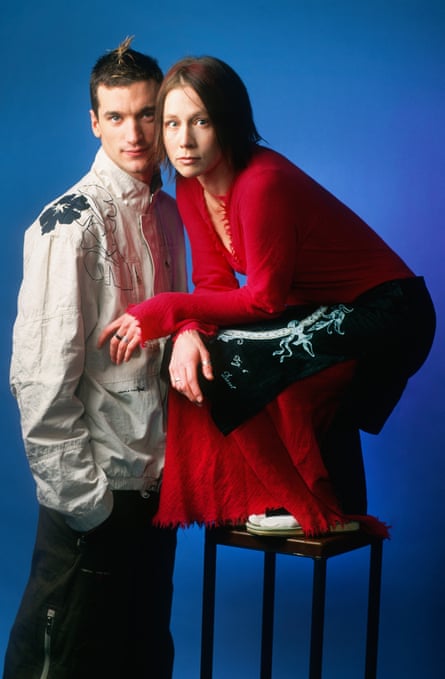
The other vital precursor was the UK’s unique soul lineage. “Sade, Cymande, Soul II Soul,” remembers Evelyn, “that was the foundation of our whole thing too. Even when we were rocking [reggae] soundsystems, you’d always have that half-hour or so when they’d play street soul or rare grooves. That all influenced all of us; I’m sure someone like [Massive Attack’s] Daddy G would say the same thing.” Through the late 80s and early 90s, acts such as Smith & Mighty, the Sindecut, Young Disciples and, of course, Soul II Soul and Massive Attack made a very distinctly British laid-back breakbeat sound ubiquitous from charts to underground clubs. The acid jazz movement overlapped with this, too: it’s the scene Mo’ Wax emerged from, and Liam Howe of Sneaker Pimps recalls, around 1993, “taking our white labels around the record shops of Soho, where you might bump into [acid jazz movers] Kevin Beadle, Gilles Peterson, James Lavelle and Patrick Forge … we were making peculiar, laid-back dance stuff that at the time we referred to just as ‘head music’.”
Jhelisa Anderson is one of the more obvious connections to the soul/jazz world, but also one of the few musicians who fondly embraces “trip-hop” as a term. Mississippian by birth, she relished British eccentricity and independence, as compared with a US industry that “would’ve had me trying to copy Janet Jackson”. She found, in Portishead , Tricky and Topley-Bird, “a version of modern blues, a depth and darkness” that drew a line from 60s and 70s soul, but also had a connection to “something old and pagan that I heard in Thom Yorke and shoegaze, a different kind of ancient expression of feeling blue, of being dark”.
That conception of a kind of specifically British blues isn’t so far fetched. Tara Mills wasn’t born when Massive Attack’s Unfinished Sympathy came out, but cites it as one of her favourite songs: “I’ve cried to that song, I’ve driven home too fast, upset, in the middle of the night, to that song.” And she found precisely the right darkness in Carns Hill’s drill beats to “make you feel something in that same way”. And the moodiness and melancholy have permeated through to a new generation in many other ways. Rhodes hears “a kind of bloodline running through James Blake and the xx” to Billie Eilish and co. Her son Reuben, who releases downtempo beats as Joseph Efi, connects the “Bristol sound” of Portishead and Massive Attack to the ineffable sadness of Burial. “There’s something about the melancholia of those Bristol tunes,” he says, “that could’ve only come from the depths of a small British city. Music dug up from under the earth or heard in the pouring rain on your walk home at night.”

This mood has gradually spread around the world. As well as through electronic and hip-hop artists such as Flying Lotus, and ubiquity of tracks such as Rob Dougan’s Mo’ Wax hit Clubbed to Death in Hollywood soundtracks, the British moodiness found its way into big pop exports. Mark Rae notes that “our production and writing of the track The Hush by Texas-influenced Dido, and the domino effect is created when that language is taken to the mainstream successfully”. It’s not a big leap to hear trip-hop echoes in Mark Ronson’s work with Amy Winehouse and Adele – and there are direct connections, too: Howe, for example, has passed on the trip-hop gene as a writer and producer for the likes of FKA twigs, Lana Del Rey and, indeed, Adele.
It seems like the further we get from its origins, the less toxic the phrase seems. Even Topley-Bird, who never accepted it at the time “because I thought we felt pretty unique”, says “in America people talk about trip-hop without any sense of shame or embarrassment, which is endearing … And a few friends are telling me that artists like Billie Eilish sound like me – which can’t be a bad thing. I came back with new music at the right time!”
Nightmares on Wax’s album Shout Out! To Freedom … is out now on Warp. Mark Rae’s novel and soundtrack The Caterpillar Club is out now on Mark’s Music. Sneaker Pimps’ album Squaring the Circle is out now on Unfall. Jhelisa’s album 7 Keys V.2 is out now on Dorado. Martina Topley-Bird’s self-released album Forever I Wait is out now. Tara Mills’ album False Hope is out now on CL Management. Joseph Efi’s EP Candour is out now on Lowlife.
- Pop and rock
- Martina Topley-Bird
- Massive Attack
- Drum'n'bass
Comments (…)
Most viewed.
Trip-Hop Artist Highlights
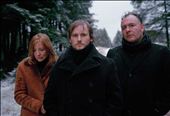
Trip-Hop Album Highlights
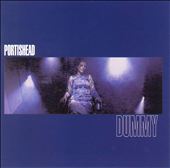
Trip-Hop Recent Releases
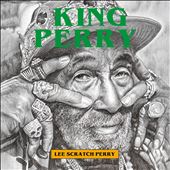
Trip-Hop Song Highlights
Other styles in downtempo.
What Is Trip Hop? Dreamy Depths Of Downtempo Grooves
The psychedelic subgenre of Hip Hop has long offered a trippy alternative to the mainstream sound.
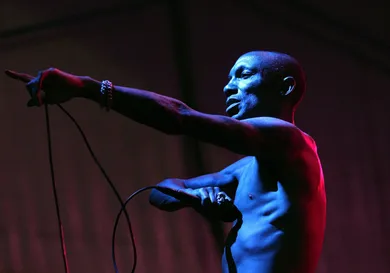
Hip Hop has spawned a number of subgenres since its inception in the 1970s. Over the years, several of these have become popular, successfully transitioning into the mainstream. Most recently, trap and drill have been in the spotlight, and may not go out of style anytime soon. While some Hip Hop’s offspring have gained mass appeal and widespread popularity, several are still largely niche. One of these is the dreamy Trip Hop subgenre.
Also known as Downtempo or Downbeat, it is a fusion of Hip Hop and electronic elements, unlike anything that came before it. Despite not being widely popular, the enigmatic fusion has left its mark on the musical landscape since its introduction. Regardless, it certainly deserves to have the word spread about it some more. It could very possibly appeal to a much wider audience as, these days, listeners’ musical palates are much more diverse. Without much ado, let’s dive into the dreamy depths of Trip Hop.
The Origin & Pioneers Of Trip Hop
Trip Hop first emerged in the late 1980s in the Bristol music scene in the United Kingdom. It was influenced by various genres, including Hip Hop, soul, jazz, funk, and electronic music. All in all, artists sought to create a distinct, downtempo sound focusing on atmospheric textures. The Trip Hop sound was championed by many pioneering acts who propagated the psychedelic sound.
Massive Attack, a collective formed in 1988, is often credited as one of the pioneering groups in the genre. Their debut album Blue Lines (1991) blended Hip Hop beats with soulful vocals, and helped lay the foundation for Trip Hop. However, it was their third album, Mezzanine , that became an international sensation, boosting the public’s attention towards the genre. Shortly after, Portishead, another iconic Trip Hop band, released their groundbreaking album, Dummy , in 1994. Emphatically, this album further defined the genre with its haunting melodies and Beth Gibson’s emotive vocals. Tricky, a member of Massive Attack, eventually broke out to become a lauded solo act.
What Does Trip Hop Sound Like?
Trip Hop is a genre characterized by a distinctive set of features. Collectively, these features create a moody, atmospheric, and often hypnotic sound. For example, central to the genre is its often slow, deliberate tempo. The beats are usually laid-back and syncopated, providing a relaxed and contemplative feel.
Another key hallmark of Trip Hop is its emphasis on creating rich, immersive atmospheres. This is achieved through synthesizers, ambient sounds, and production techniques that evoke a dreamlike feeling. True to its name, Trip Hop incorporates elements from Hip Hop, such as drum breaks and the rhythmic flow of rap. However, it tends to deconstruct and slow down these elements, offering a more ambient take on Hip Hop aesthetics.
In addition to those characteristics, many Trip Hop tracks feature sultry, soulful, or haunting vocals. Female vocalists, in particular, are prevalent, contributing to the genre’s passionate and often melancholic vibe. Notable examples include Beth Gibbons of Portishead, Shara Nelson of Massive Attack, Skye Edwards of Morcheeba, and Björk. Over the years, the genre has evolved, and new artists have emerged with different interpretations of Trip Hop. FKA Twigs is one of the more popular artists who make Trip Hop music today. Also, Lana Del Rey has been known to experiment with the genre, particularly in her 2012 album Born to Die .
As a genre that continues to evolve, Trip Hop remains a captivating exploration of sound. It seamlessly blends elements from various musical traditions to create a unique, diverse, and influential genre. Undoubtedly, it is among the more intriguing subgenres of Hip Hop, and is one of the most substantial. While it may be over three decades old, there’s still much more Trip Hop has to offer. As it is a genre that embraces experimentation, it will continue to break the ceiling, transform, and diversify.
- Link Copied to Clipboard! Copy URL
- massive attack
- Rap Subgenres
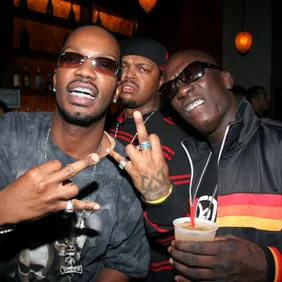
- listening party
- existing artist
- artists PRO view site
- edit profile
- subscription subscription
- view collection
- showLinkedBands(!showLinkedBands())" data-test="linked-accounts-header">
- See all results
No matching results
Try a different filter or a new search keyword.
Search all Bandcamp artists, tracks, and albums
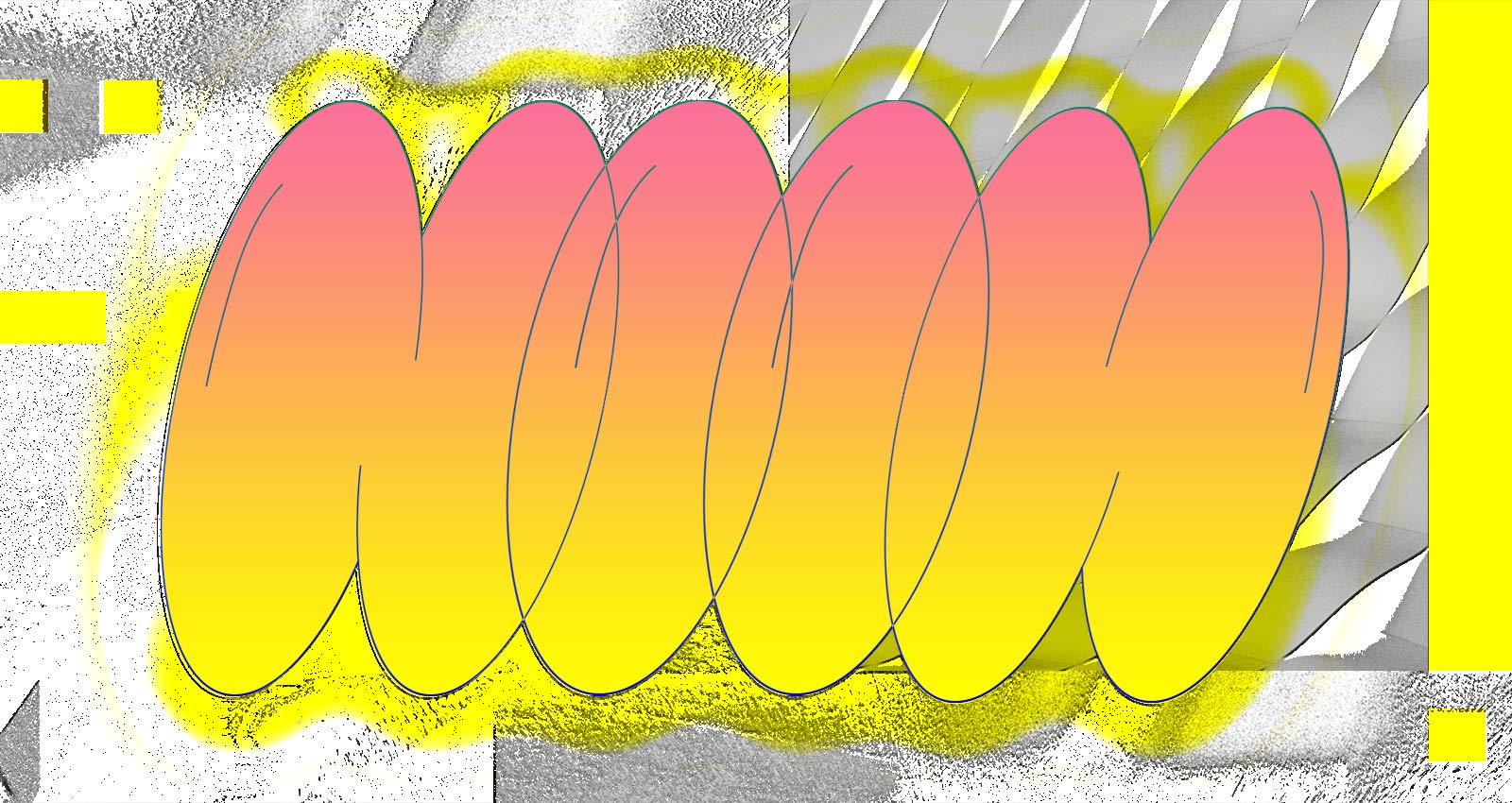
The definition of “trip-hop” is a slippery one; even one of the genre’s pioneers has trouble pinning it down. “Essentially, it needs to have a down-tempo beat, to be hypnotic and narcotic to an extent—that chilled-out, slowed down feeling,” says Sneaker Pimps ’s Liam Howe, whose album Becoming X was one of the genre’s foundational LPs. “It also has to have a little bit of dub, a bit of funk, soul, and jazz. We put quite a lot of guitars and folk music into it as well, and if you push genres like hip-hop and jazz as far as they can go, then you come up with a new amalgamation of sound.”

That “new amalgamation of sound” first began taking shape in the early ‘90s. Massive Attack’s 1991 album Blue Lines is considered the origin point of the genre, a blueprint for how to blend hip-hop, synth, and dub into a commercial product. Portishead’s Dummy arrived three years later, and immediately became the dinner party album for the cool set, introducing the world to the gorgeous, ghostly vocals of Beth Gibbons. Now, some 20 years later, traces of the genre can be heard in the music of FKA Twigs, serpentwithfeet , Arca , and the xx, and the Sneaker Pimps themselves have ended a two-decade hiatus, returning with their fourth studio album, Squaring the Circle . And though it’s primarily associated with the UK, these days there are more than a few notable international acts mining trip-hop to inform their own sound.
These are just a few of the new faces of trip-hop.
Sneaker Pimps Becoming X

The Sneaker Pimps’s most iconic album, Becoming X, helped to solidify the UK trip-hop sound. Released in 1996, the album featured the seductive croon of Kelli Ali , and breakout hits “6 Underground” and “Spin Spin Sugar” combined dreamy electronica beats with crackling vinyl samples and layers of acoustic guitar and keyboards. Ali departed after this album, but founding members Chris Corner and Liam Howe pressed on, with Corner assuming vocal duties on the two albums that followed.
“When we were starting to make music in the early ‘90s, we were making instrumental dance music, and there was a similar scene in London,” says Howe, who in addition to his role in Sneaker Pimps has also produced tracks for Lana Del Rey , FKA Twigs, and Marina and the Diamonds . “We were about three-quarters of the way through writing Becoming X when Portishead’s Dummy came out, and that’s when the defining term ‘trip-hop’ landed. We used to call it ‘head music’ before that.” As its title suggests, the group’s fourth album Squaring the Circle is a return to their musical beginnings. “The new album has one foot in that ‘90s trip-hop era, because that’s part of our DNA, [but it’s also] a mixture of Becoming X, Splinter, and Blood Sport . It’s the same band, doing the same thing that we always did.”
Kelli Ali Ghostdriver

Former lead singer of Sneaker Pimps, Kelli Ali’s most recent album is the soundtrack to the film Ghostdriver (2021), which she wrote, produced, and directed. It’s a glimmering, romantic beast of a record, full of skittering percussion, operatic harmonies, and gothic melodrama; songs like “Fade To Black” and “Waiting For Grace” are sweetly melancholy, and the tone is appropriately cinematic throughout, employing both jazzy brass and, on tracks like “The Fear of London,” video game-style synths. Howe contributed extensively to the mix and production, a throwback to their days working together in Sneaker Pimps. “I’ve always kept in touch with Kelli, she’s lovely,” he says. “She’s got fantastic character to her voice—it’s perfect for a soundtrack. In trip-hop, there was so much influence from ‘60s and ‘70s film soundtracks, and that noir, cinematic sound is a great fit for her voice.”
Sevdaliza Shabrang

Netherlands-based Sevdaliza channels her experiences as an Iranian-Dutch woman into trip-hop tracks that are both political and personal. Born in Tehran, Sevdaliza has used her music and her public presence to address prejudice against Muslims in Western countries. Her 2017 track “ Bebin ” protested the ban on Muslims entering the U.S .; it was the first song she’d performed entirely in Persian. Her 2020 album Shabrang (a Farsi phrase that loosely translates to mean “night color”), is both malevolent and powerfully feminine. Bone-chilling strings, snarling beats, and futuristic urban club sounds lay the groundwork for her compelling voice. She sounds bereft on Farsi ballad “Gole Bi Goldoon,” fierce on “Darkest Hour,” and vulnerable over the slow clash of piano and softly clattering drums on “All Rivers At Once.”
Pale Spring CYGNUS

Los Angeles’s Emily Harper Scott and her partner and co-producer Drew Scott make the sort of fuzzy, spacious electronica that invites listeners to disappear inside the warmth of their sound. CYGNUS , released in 2019, is a showcase for Harper’s dexterous range, and her instincts for when to dial up the vocal dramatics and when to leave just aching silence. Her improvisational approach to songwriting on CYGNUS has roots in jazz and R&B—though the glitchy beats, gothic instrumentals, and surreal atmosphere are all signature trip-hop.
A/T/O/S waterman
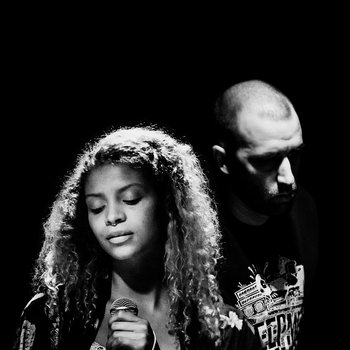
The Belgian duo A Taste Of Struggle (A/T/O/S ) met in 2012 and released their self-titled debut two years later, but it’s last year’s waterman that serves as the ideal introduction to their sound. The pair’s blend of hip-hop, dub, and R&B frequently recalls Massive Attack; on tracks like the slow-simmering “connect the signs,” Amos’s R&B-inspired vocals perfectly complement the boxy beats and dub-like bass of producer Truenoys, while songs like “are you in love” have the moodiness of dubstep, reflecting the duo’s “old-meets-new” approach to trip-hop.
Dolphin Midwives Body Of Water
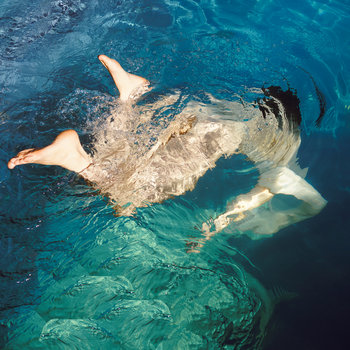
The music of Portland artist Sage Fisher, who records as Dolphin Midwives , is soulful, wistful, and romantic. Her latest album, Body of Water is aptly named—there’s something oceanic and fluid about its songs. On “Clearing,” vocal harmonies are layered over a steady synthetic heartbeat rhythm; “Bloom” is anchored by Fisher’s operatic vocals, synths unfolding slowly all around her. Fisher’s music has served as the soundtrack for dance and sound installations in art galleries and at festivals. Fittingly, Body of Water is the kind of multi-layered record that invites multiple interpretations.
Public Memory Wuthering Drum
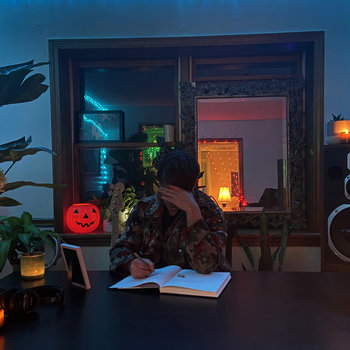
Like its cover art, the sound on Public Memory ‘s 2016 LP Wuthering Drum is distorted and strange, but beautiful. On “Ringleader,” murky, malevolent synths sizzle over a somnambulant beat. On “Domino” and “Lunar,” Robert Toher’s vocals duck in and out of the layered strings, bells, and vintage video game sounds. The effect is both haunting and peaceful at once. Though Toher sings of isolation and loneliness, there’s something lovely in the consistent tone and pace of the tracks that seeks to connect and remain alive.
Time For Dreams Life of the Inhabitant

Time For Dreams are the Melbourne-based duo of Amanda Roff and Tom Carlyon, and their darkly humorous single “Death to All Actors” epitomizes their gothic, playful attitude. Sweeping synths and crackling percussion create a foreboding atmosphere, but they’re countered by warm atmospherics. Recorded in the cold environs of Mount Macedon, the album has a pervasive sense of haunted, unexplored space. It’s an album full of beautiful contradictions, pitting the organic sound of the human voice against synthetic arrangements, mirroring the natural push-and-pull of human existence.
Electronic Read more in Electronic →
Top Stories

Latest see all stories


On Bandcamp Radio see all

- terms of use
- acceptable use & moderation
- switch to mobile view
Fact Magazine
- Exhibitions
Now reading:
The 50 best trip-hop albums of all time
Share this:
- Access All Areas
- Against the Clock
- Documentaries
- FACT Freestyles
- In The Studio
- How To Make A Track
- FACT Premieres
- Record Shopping
- Singles Club
- Dubplate Masters
- The Vinyl Factory Films
Illustration by: Mat Pringle
Like it or not, trip-hop is a thing. I say this as someone who, for the past 18 odd years, has loved the music just as much as I’ve hated the term.
Coined in June 1994 by Andy Pemberton in a feature for Mixmag , trip-hop was used to describe the recent stylistic shift of the Mo’ Wax label and that music’s popularity in dance circles, particularly in after hours sessions. Pemberton heralded trip-hop as a psychedelic take on hip-hop and the first valid alternative to America’s dominance of the music.
The DNA of trip-hop was more complex than its reduction to bite-sized adjectives. One strand came from hip-hop, which had fed the musical imagination of a new generation for over a decade, while another strand came from rave, which had provided further stylistic possibilities with its fusion of drum machines, breaks, samples and synthesisers. Sound systems, digging, dub, chill-out rooms, early globalisation and technology also acted like so many molecules attaching themselves to a new idea of what hip-hop could be. Trip-hop was a logical evolution in a decade during which everyone came down from a partying high to face the reality that hip-hop and dance music were being co-opted by the mainstream; dreams of a new sonic utopia crushed by the relentless onslaught of capitalism.
Just as techno had become a synonym for dance music, trip-hop soon became a crutch for journalists and marketers wanting to signify hip-hop without rappers. Most notably, it became a byword for the Bristol sound epitomised by bands like Massive Attack and Portishead. In 1998, The New York Times retconned Massive Attack’s debut album Blue Lines as the so-called genre’s inception point.
On the ground, the sound did resonate in a genuine way among a new generation of musicians seeking freedom to experiment. In London, Ninja Tune played yin to Mo’ Wax’s yang. Both labels crafted a unique visual dimension and assembled expansive rosters. In Paris, DJ Cam pushed out his own blunted beats to eager continental heads. In Austria, Kruder & Dorfmeister added an extra layer of dub and turned trip-hop into downbeat in a haze of weed paranoia. In New York City, a loosely linked group of artists, thinkers and musicians spread from downtown Manhattan to Brooklyn’s cheap warehouses to imagine their own version of the sound, which The Wire magazine dubbed illbient. No matter the names or the execution, the DNA was the same.
It was always going to end badly. Mo’ Wax, often seen as responsible for the sound, originally kicked off riding the acid-jazz wave, a sound that soon exhausted itself into a creative cul-de-sac. By the late 1990s, trip-hop had become nothing more than limp, often stoner-friendly, coffee table hip-hop beats. It was music for people who felt rap was too dangerous. To those who believed in it though, it always held a promise of things weird and wonderful.
Alongside IDM (another etymological faux pas from the 1990s), trip-hop presaged the beat scene of the late 2000s, a continuation of the ideas and aesthetic it first articulated. When I spoke to Daddy Kev in 2012, he pointed to Mo’ Wax as one of the key influences for Low End Theory. Flying Lotus has cited DJ Krush as an influence. And tastemakers like Gilles Peterson have championed the music’s evolution across decades.
In putting together this list, we tried to take all of this into account. There is no purism to indulge in, because there is nothing pure about trip-hop. As DJ Food’s Strictly Kev put it recently, at its best the music was “psychedelic beat collages, usually instrumental, embracing samples, analogue electronics and dub FX.” The list is contained to the 1990s for historical accuracy and tries to steer away from the music’s strongholds to show the width and breadth of the sound. As such, you’ll find artists from France, Northern Ireland, Japan, America, Denmark and Brazil represented as well as releases from Asphodel, Wordsound, Rephlex, Warp and a handful of majors. It’s also worth noting that when an artist had multiple worthy albums (for instance, Portishead or Massive Attack), we only included their most definitive moment.
Listen to the whole list as a playlist via YouTube or Spotify .

50. London Funk Allstars London Funk Volume 1 (Ninja Tune, 1995)
London Funk Allstars’ Ninja Tune debut will likely sound dated to most who come across it for the first time today. And yet, amid the simple breakbeats, classic loops and obvious vocal chops there’s a real beauty that captures the essence of a simpler time when the possibilities seemed endless and technology was providing new ways to think about music.

49. Bomb The Bass Clear (4th & Broadway, 1994)
Tim Simenon might not be the most obvious pick for a trip-hop list, but Clear exhibits plenty of the genre’s hallmarks. Tossing away the rave collage aesthetic that had made ‘Beat Dis’ such a massive success, Simenon weaves an ambitious narrative, tying together dub and hip-hop-influenced tracks with heady spoken-word clips from writers Benjamin Zephaniah and Will Self. There are also notable contributions from influential figures such as Leslie Winer (if you haven’t heard her 1993 album Witch , you should seek it out immediately), Bernard Fowler and Bim Sherman, opening up a dialogue between New York, Jamaica and the UK that would remain at the center of the genre for years to come.

48. Slicker Confidence in Duber (Hefty, 1998)
John Hughes’s Chicago-based Hefty imprint was crucial in cementing the relationship between Chicago’s burgeoning post-rock scene (led by Tortoise) and the seemingly more experimental (and more European) IDM and trip-hop genres. This union would reach its peak in 2001 with Telefon Tel Aviv’s massive Fahrenheit Fair Enough , but a few years prior, Hughes himself was making similar strides under his Slicker moniker. Confidence in Duber sits firmly alongside Scott Herren’s early Delarosa & Asora experiments, snatching the breaks ‘n’ blunts from trip-hop and injecting them with digital belches cribbed from the IDM playbook. Oddly enough, it’s aged better than you might expect, and is well worthy of re-investigation.

47. Meat Beat Manifesto Subliminal Sandwich (Interscope, 1996)
Subliminal Sandwich is Meat Beat Manifesto’s fourth album and their first on a major label via Nothing Records, a subsidiary of Interscope helmed by Trent Reznor that was intended to capitalise on the success of Nine Inch Nails. The album proved a critical and commercial flop, though it remains an interesting offering, drawing links between trip-hop, dub, industrial and ambient with a touch of psychedelia. Split across two CDs, it’s the first half that’s of most interest here as the rest focused on drone and ambient compositions. The 18 tracks draw heavily on samples and breaks combined with pulsing basslines, heavily processed vocals and an overall gritty finish that makes it sound like the bastard child of Mo’ Wax and Bill Laswell’s Axiom Records.
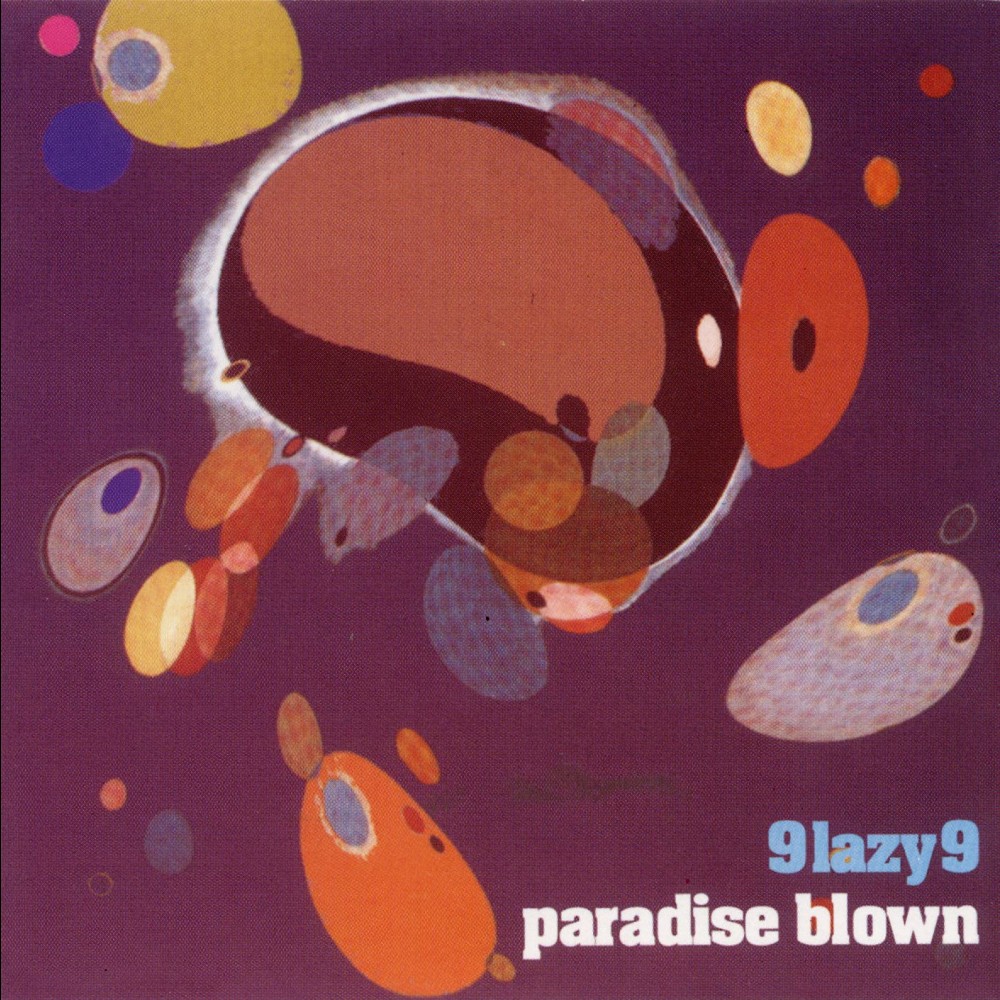
46. 9 Lazy 9 Paradise Blown (Ninja Tune, 1994)
Early Ninja Tune beatmakers 9 Lazy 9 might not sound as crucial now as they did back in the mid 1990s, but there’s still fun to be had on Paradise Blown , their second album. The Italy-based group (including Funki Porcini’s James Braddell) added a distinctly light-hearted lounge quality to a genre that could often dwell in the darker crevices, and as such Paradise Blown can be filed alongside offerings from Tim ‘Love’ Lee and Tipsy, even if it’s not anywhere near as endearingly experimental.

45. UNKLE Psyence Fiction (Mo’ Wax, 1998)
Mo’ Wax boss James Lavelle’s pet project, UNKLE, remains a controversial part of the trip-hop canon. With distance, Psyence Fiction is possibly more enjoyable than it was back in 1998, and it highlights the genre’s crossover potential with guest spots from Radiohead’s Thom Yorke, The Verve’s Richard Ashcroft (then riding high after the success of ‘Bitter Sweet Symphony’) and Badly Drawn Boy, but it’s hard not to see it as a slightly cynical marketing exercise. DJ Shadow, who was drafted to co-write the album, was quick to speak out about his unhappiness with both the process and the result, but Psyence Fiction is representative of a time and place, and shows trip-hop’s promise as it was being co-opted and transformed into something that labels could whitewash and monetize. Zero 7 was just around the corner.

44. Tipsy Trip Tease – The Seductive Sounds of Tipsy (Asphodel, 1996)
It might be a stretch to classify Tipsy as trip-hop, but the Californian duo of Tim Digulla and David Gardner certainly used many of the same tools as their European peers. Pillaging loops from a wide variety of lounge and exotica records, Digulla and Gardner came up with a dusty, defiant and undoubtedly downbeat look at sound collage. Since it veered away from obvious breaks and beats, Trip Tease actually holds up markedly better than some other records of the era, and ends up sounding closer in style to David Holmes, with a smoky, cinematic quality.

43. Justin Warfield Field Trip To Planet 9 (Qwest, 1993)
Released a year before the term trip-hop was coined in Mixmag , Justin Warfield’s first and only solo album is included here largely thanks to Strictly Kev, who recently pointed out its relevance with regard to the music’s supposed psychedelic properties. My Field Trip To Planet 9 is a rap album, cut from the same cloth as Check Your Head -era Beastie Boys and Digable Planets. But remove its vocals and behold music that sounds like it wouldn’t be out of place on Mo’ Wax or Ninja Tune a few years later. At its best, trip-hop was music for b-boys on acid, as Warfield sang on the album’s single. A year later, he provided the vocals for Bomb The Bass’s ‘Bug Powder Dust’, another bonafide rap-on-acid classic that got the trip-hop treatment via Paris’s La Funk Mob and Vienna’s Kruder & Dorfmeister.

42. Smith & Mighty Bass Is Maternal (More Rockers/!K7, 1995)
You can’t have a conversation about trip-hop without mentioning Bristol, and you can’t talk about the Bristol scene without giving a nod to Smith & Mighty. The West Country duo took soundsystem culture and a hefty scoop of the ideas informing an increasingly popular jungle scene and helped formulate an entire sound. Without them, Portishead, Tricky and Massive Attack simply wouldn’t sound the same. Bass Is Maternal is the best representation of their scope, and illustrates their experimentation as they attempted to summarize the meeting point between UK rave culture and Jamaican dub. It’s not always successful, but to ignore it is to disregard an important chapter in British musical history.

41. DJ Vadim U.S.S.R Repertoire (The Theory of Verticality) (Ninja Tune, 1996)
The first of Vadim’s four albums for Ninja Tune, U.S.S.R Repertoire is a weeded-out take on an American musical form by a Russian immigrant living in the English capital – an instrumental microcosm of hip-hop’s globalisation. Beneath a layer of simplicity, there is depth to Vadim’s approach; the beats feel expansive, the music inviting the listener to cradle in the grooves of the breaks and warmth of the bass. Much of this debut also acts as an echo of what Wordsound and We™ were doing across the ocean at the same time. As Vadim’s 1995 debut on his own Jazz Fudge imprint proclaimed, heads weren’t ready.
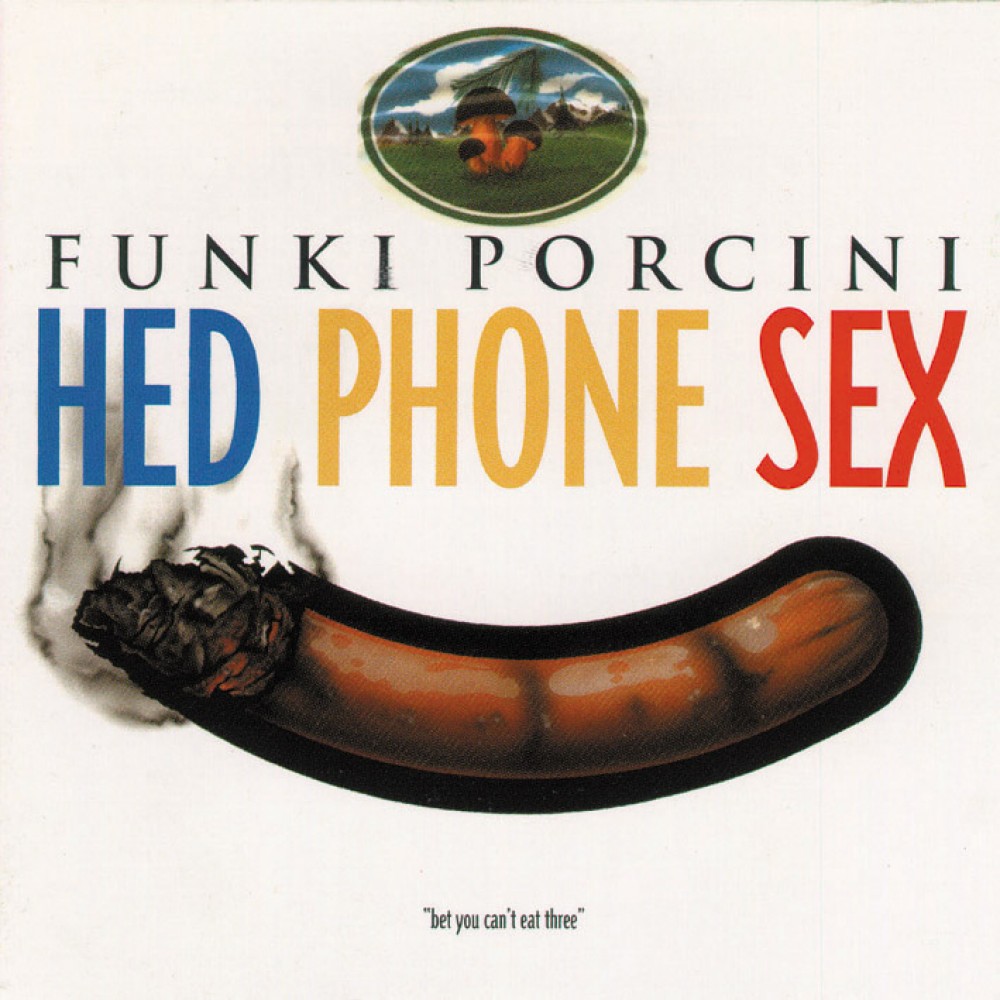
40. Funki Porcini Hed Phone Sex (Ninja Tune, 1995)
After a decade penning film and TV music in Italy, British producer James Braddell decided to head to London and set up his own studio, where he would use some of his commercial writing tricks to come up with Funki Porcini, one of the most recognizable names on Ninja Tune’s early roster. This was trip-hop with a side helping of very English humour, from the moniker itself to the record’s awkwardly suggestive cover. Musically, Braddell laid out a template that would be traced over for years to come with his combination of dusty hip-hop rhythms and booming dub bass. The swirling, reverb-drenched samples just added an extra layer of thick smoke to an already bloodshot premise.

39. Red Snapper Prince Blimey (Warp, 1996)
If the elephant in the room here is acid jazz, Red Snapper are one of the rare acts who addressed it head-on. Prince Blimey is their first full-length and is certainly more overtly jazzy than most of the records we’ve highlighted on this list. That’s not a negative though, the trio – a bassist, guitarist and drummer – had genuine chops, and managed to inject their musical training into a more contemporary mode, touching on trip-hop and drum & bass without ever sounding forced. It’s a concoction that might now sound too close to the coffee table dreck that sat next to a copy of American Psycho and a rolled up tenner at the close of the millennium, but Red Snapper managed, somehow, to keep things edgy and unusual. They even, somewhat inexplicably, ended up touring with The Prodigy.

38. Various Artists DJ Kicks: Kruder & Dorfmeister (!K7, 1996)
Despite becoming the figureheads of Austria’s downbeat scene (a continental take on trip-hop), Viennese duo Kruder & Dorfmeister never released an album. Instead it was through their debut EP, G-Stoned , and absurdly popular mix CDs that they accrued fame. Their 1996 contribution to !K7’s DJ-Kicks series captured the sweet spot between the blunted grooves of chill-out rooms and the rolling breaks of jungle, an approach they’d refine two years later on The K&D Sessions . K&D’s arrival on the scene came at a time when trip-hop had started to resemble a safe version of hip-hop for those seeking thrills without effort, and their mixes remain as close as you can get to the bland, coffee table take on the genre without feeling too sick.

37. Wagon Christ Throbbing Pouch (Rising High Records, 1994)
With releases under a variety of aliases on seminal labels like Ninja Tune, Mo’ Wax, Planet Mu and Rephlex throughout the 1990s, Luke Vibert is one of the artists that best connects the dots between the various styles and ideas that fed into trip-hop. His second release as Wagon Christ pieces together elements from hip-hop, the burgeoning UK dance music scene and electro into a colourful sonic puzzle that glides along in splendid fashion. Or as Select put it at the time, “the missing link between Aphex Twin and Mo’ Wax.”

36. Tim ‘Love’ Lee Confessions of a Selector (Tummy Touch, 1997)
As boss of the Tummy Touch label, Tim ‘Love’ Lee had an important part to play in the development of downbeat and trip-hop, not least thanks to his discovery of future genre stars Groove Armada, but the less said about that the better. Confessions of a Selector might be his finest achievement, not quite reaching fully into the trip-hop cookie jar, instead relying on Lee’s estimable crate digging expertise. The hallmarks of the genre are there, but prettied up with luscious tropical vistas and an eccentric (but smart) cut-and-paste quality that isn’t a million miles from US duo Tipsy.

35. Psychonauts Time Machine (Mo’ Wax, 1998)
Psychonauts were Mo’ Wax’s secret weapon, so much so that James Lavelle had them provide mixes under his name – ghost mixed, if you will. Time Machine was his payment for services rendered, and it’s a fine document of the era, not only rounding up some of Mo’ Wax’s finest moments, but also showing just how important turntablism and truly creative mixing was to the scene’s development. Most songs don’t get more than a minute of air time as the duo power through almost 50 tracks in half an hour, blending together cuts from genre luminaries DJ Krush, Luke Vibert, DJ Shadow, La Funk Mob and more. If you need a quick-to-digest taster of the genre, this is as good as it gets.

34. Prince Paul Psychoanalysis (What Is It?) (Wordsound, 1996)
We can already hear the furious typing of wronged hip-hop heads asking with disgust why Prince Paul is even on this list. Psychoanalysis is here for a bunch of reasons: it was originally released by Wordsound, a label most associated (wrongly or not) with illbient, NYC’s answer to trip-hop; it’s a rare example of a fully instrumental hip-hop album from a city that, in the 1990s, had no time for anything that didn’t have rappers on it (Skiz Fernando Jr., who ran the label, recounted stories of Fat Beats refusing to stock the album at the time); and it’s basically 15 tracks of Prince Paul taking his whole skit philosophy to its most absurd conclusion. For all these reasons and more, Psychoanalysis remains a slept-on classic from the 1990s, a half-way point between trip-hop’s European roots and its infatuation with American hip-hop.

33. The Herbalizer Blow Your Headphones (Ninja Tune, 1997)
Jake Wherry and Ollie Teeba’s The Herbalizer project was a fine example of trip-hop’s most visible back-and-forth with “proper” hip-hop. They weren’t afraid to work with emcees, and on Blow Your Headphones , their second album, they found a kindred spirit in Natural Resource’s What? What?, now better known as Jean Grae. She added an important element to Wherry and Teeba’s jazz-flecked backdrops, and while it’s certainly true that many of trip-hop’s consumers were looking for a safer alternative to charged US rap, The Herbalizer walked the tightrope admirably, and were markedly more successful in bridging the genres than many of their peers, who buckled when attempting to integrate emcees.

32. The Bug Tapping the Conversation (Wordsound, 1997)
Another release that will likely raise a few eyebrows for its inclusion, The Bug’s debut album nonetheless fits within the wider idea of what trip-hop could, and should, be about. There are a few other reasons too: it was released on Wordsound; DJ Vadim provided the drum samples; and, like the best trip-hop releases of the 1990s, it was a soundtrack for life, with the listener invited to let their mind fill in the blanks. The blend of hip-hop, dub and industrial influences that would go on to characterise Martin’s work is found here at its rawest and tracks like ‘Those Tapes Are Dangerous’ show a darker side to trip-hop’s blunted potential.

31. Neotropic Mr Brubaker’s Strawberry Alarm Clock (Ntone, 1998)
Riz Maslen is often more widely associated with electronica (no doubt thanks to her early association with Future Sound of London), but her second Neotropic album Mr Brubaker’s Strawberry Alarm Clock is one of the trip-hop era’s hidden gems. The record appeared on the Ninja Tune sister label Ntone, and is one of the few full-lengths on this list that still sounds truly bizarre and alien. On top of the usual dusty breaks, Maslen lavished elements absorbed from IDM’s palette but left behind its seemingly random, artificial bent. The conversation between trip-hop and IDM was very visible in the late 90s – Plaid being the most obvious example – but Maslen avoided many of the trappings of both scenes, emerging with a record that was probably “too future” for most beatheads.

30. Various Artists Headz (A Soundtrack Of Experimental Beathead Jams.) (Mo’ Wax, 1994)
After a forgettable false start peddling iffy acid jazz, Mo’ Wax made a stylistic shift in 1994, kickstarting a four-year period that continues to resonate two decades on. The first Headz compilation is a neat 18-track digest of that transition, a declaration of what was to come. Influences, ambitions and comments on the status quo of the time are found in the slowed down grooves and samples as well as the track titles: ‘Ravers Suck Our Sound’, ‘Contemplating Jazz’, ‘In Flux’, ‘The Time Has Come’. The titular beatheads may have seemed like a stoned, uncreative bunch at the time but their aesthetic has proven resilient. Alongside obvious names like DJ Shadow, La Funk Mob and R.P.M, Headz also featured Nightmares On Wax, Autechre, Howie B. and various members of Major Force.

29. Various Artists Eleven Phases (Sublime, 1998)
Eleven Phases is a true gem, a little-known compilation of downtempo and instrumental tracks from many of Detroit’s finest techno artists including Robert Hood, Kenny Larkin, Eddie Fowlkes and Anthony Shakir. Originally released in Japan only, the compilation makes for a fascinating snapshot of the hip-hop roots and leanings of the city’s dance music pioneers. Will Web’s ‘Cosmic Kung-Fu Funk’ slows down techno’s rawness to a blunted, hip-hop-influenced slouch while Robert Hood’s ‘Mystique’ wouldn’t be out of place on a !K7 compilation. Despite emerging entirely outside of the 1990s trip-hop world, Eleven Phases shows how the core ideas and principles of the aesthetic bled into various scenes and cities throughout the decade.

28. Solex Solex vs. Hitmeister (Matador, 1998)
It makes sense that one of the best (and weirdest) records in a genre that deifies crate diggers should come from a record store owner. Elisabeth Esselink’s debut album was hard to categorize when it landed in 1998, there were elements pilfered from plenty of genres but not really enough of one or the other for categorization. Not only this, but Solex vs. Hitmeister emerged on the Matador label, then best known for releasing indie records. It was certainly aimed at a different crowd from the usual green-thumbed beatheads with a complete collection of Mo’ Wax 12″s and a line of Gundam figurines on their desk, and that was a good thing. Esselink was a breath of fresh air, and Solex vs. Hitmeister ‘s peculiar charms still resonate as she tangles her voice through hiccuping collages of unwieldy samples and collapsing drum machine loops.

27. Various Artists Funkjazztical Tricknology (Ninja Tune, 1995)
Released in 1995, the first Ninja Tune compilation arrived between the two Headz volumes from Mo’ Wax, providing a perfect counterpoint that showed how similar yet different the London powerhouses were at the time. Focused largely on early Ninja artists such as 9 Lazy 9, The Herbaliser, Coldcut and DJ Food, it also features appearance from Austria’s downbeat kings Kruder & Dorfmeister and Attica Blues, who had just joined Mo’ Wax. As with the first Headz volume, Funkjazztical Tricknology also marked the beginning of a shift for Ninja Tune with its releases becoming essential not just for the music but also their design, packaging and words of in-house scribe Shane Solanki, who invented the Ninjaspeak that played into the label’s growing mythos.

26. DJ Food Recipe For Disaster (New Breed, 1995)
No other artist embodies Ninja Tune quite like DJ Food, the multifaceted DJ project set up in the early days of the label by its founders, Coldcut. As its name implies, DJ Food was set up to provide DJs with the necessary ingredients to do their thing. For the first five years, the collective – Coldcut, Strictly Kev and PC – released loops and other tools via the Jazz Brakes series, some of which is great, while some is just as forgettable as the more tepid early Mo’ Wax releases. In 1995, DJ Food went for a meatier offering with their debut album, A Recipe For Disaster . Using the same approach that had made their Solid Steel mixes and live appearances unmissable, they pieced together 16 tracks that veer from downtempo moody to breakbeat furious and proved that they knew their way around the trip-hop kitchen just as well as the best of them.

25. DJ Krush & Toshinori Kondo Ki Oku (Apollo, 1996)
The collision of avant-garde jazz and trip-hop was bound to happen. Experimental players throughout the world were desperate to open up a conversation with younger producers, and trip-hop (as well as drum & bass) was an obvious crash-pad, considering its liberal pilfering of the genre via sampling. Ki Oku is one of the best examples of this collision, despite trumpeter Toshinori Kondo turning in a surprisingly straightforward performance throughout. (This is a musician who had gone head to head with Peter Brötzmann and John Zorn – we weren’t exactly expecting him to toot out a cover of Bob Marley’s ‘Sun Is Shining’.) But it works. What could, in the wrong hands, have been one of the worst abuses of both jazz and trip-hop tropes, is actually remarkably measured and incredibly listenable.

24. We™ As Is. (Asphodel, 1997)
We™ formed by accident in the early 1990s after DJ Olive had been asked to contribute a track to Wordsound’s Certified Dope Vol.1 compilation for which he roped in fellow Brooklyn musicians Lloop and Once11. In the following years the trio became one of the emblematic acts of New York’s short-lived illbient scene, drunk off the possibilities afforded by the experiments that drove their creative ecosystem, where ambient, dub and hip-hop floated freely in a haze of smoke between cheap Brooklyn lofts and downtown squats. Their 1997 debut for Asphodel is a blistering run through hip-hop instrumentals, ambient lulls and drum & bass exercises that highlight the music’s chill-out roots and breakbeat fetish.

23. Amon Tobin Bricolage (Ninja Tune, 1997)
Known for his virtuoso sound design and increasingly complicated A/V shows, Brazilian producer Amon Tobin might seem like an odd addition to a list of trip-hop albums, but bear with us. His second album Bricolage emerged from the dust of trip-hop, appearing on Ninja Tune and offering a view of the scene through cracked glass. Tobin provided a more precise (and, let’s be honest, less stoned) take on the trip-hop sound, absorbing drum & bass and IDM influences without batting an eyelid. The result is an accomplished midpoint between the edit-heavy trickery of Squarepusher and Aphex Twin and the moody soundscapes of Krush, Vibert and Shadow.

22. Third Eye Foundation Semtex (Linda’s Strange Vacation, 1996)
Matt Elliott may have been a total outlier to most of the scenes that piled up to intersect at trip-hop, but Semtex is an example of how certain musicians could absorb familiar tropes without sacrificing originality. Elliott’s Third Eye Foundation debut fused breaks and booming sub bass with sounds more common to shoegaze: endless reverb, screaming and grizzled distortion. Traces of drum & bass (which would emerge more clearly on Elliott’s follow-up album Ghost ) slipped in-and-out of focus, and Semtex doesn’t really feel like part of one movement or another, rather adjacent and dizzy from ether and cheap draw. If anyone tries to tell you Bristol was just Portishead, Tricky and Roni Size, play ’em this burner.

21. Attica Blues Attica Blues (Mo’ Wax, 1997)
Like many of the artists and albums featured in this list, Attica Blues is trip-hop thanks to the location and affiliations of its creators at the time. A trio composed of producers Charlie Dark (then D’Afro) and Tony Nwachukwu (of CD-R fame) alongside singer Roba El-Essawy, Attica Blues made jazz-influenced hip-hop that happened to have a woman singing on it instead of emcees rapping. In the 1990s, thanks to genre purism, that meant your shit wasn’t rap and therefore wasn’t hip-hop. Attica Blues is one of Mo’ Wax’s better and more slept-on full lengths, a deft exercise in sampling, programming and arranging, back when doing so took more than a few clicks of a mouse.

The best trip-hop owed plenty both to the art of mixing and the cut-and-paste aesthetic of the 1980s, which is why a handful of releases on this list are mix CDs rather than albums. Cold Krush Cuts is a perfect example of how those two ideas influenced the music at its peak, and has the bonus of acting as a handshake between the two London labels most associated with the tag. Krush was Mo’ Wax’s Japanese weapon, and Coldcut and DJ Food were Ninja’s own zen masters of audio collage. The result is a still-classic double CD with the London boys arguably edging it thanks to a wide selection and craftsmanship reminiscent of their acclaimed Journeys By DJ entry; DJ Krush goes for the mind, limiting his selections to only six of Ninja Tune’s artists and slicing the cuts up in his trademark less-is-more approach.

19. Depth Charge 9 Deadly Venoms (Vinyl Solution, 1994)
A natural progression from the movie-obsessed NY rap of Wu-Tang Clan et al, 9 Deadly Venoms used a backbone of cult film samples to underpin gritty hip-hop instrumentals that helped inform a fast-growing scene. This was the blueprint for the Mo’ Wax 12″s to come: music based around the kind of nerd fandom that in 1994 was still a counter-culture. It still plays like an authentic labour of love for Jonathan Saul Kane, as he blends chops from The Evil Dead and Dirty Harry with collapsing breaks and ominous textures – it’s hardly surprising that the producer ended up establishing a company to issue UK versions of Hong Kong action movies.

18. Nearly God Nearly God (Island, 1996)
Described by Tricky as “a collection of brilliant, incomplete demos,” Nearly God is a bright, often-forgotten reminder of just how unmatched Tricky was in the 1990s. He called the record Nearly God , for fuck’s sake, and that wasn’t far from the truth. The album acted as a stop-gap between Tricky’s genre-defining Maxinquaye and his difficult (but almost equally brilliant) about-turn, Pre-Millenium Tension . It stands apart simply because of its scope – there are appearances from regular collaborator Martina Topley-Bird, but also tracks with Alison Moyet, Björk, Siouxsie and the Banshees and Terry Hall. What sounds like it could have been a self-indulgent victory lap for (back then) one of the UK’s most notorious stars is somehow a coherent, exemplary document of a peculiar time in British music. Tricky also has to be commended for having the good sense to veto a collaboration with Damon Albarn (and then Suggs) which could have easily been the straw that broke the camel’s back.
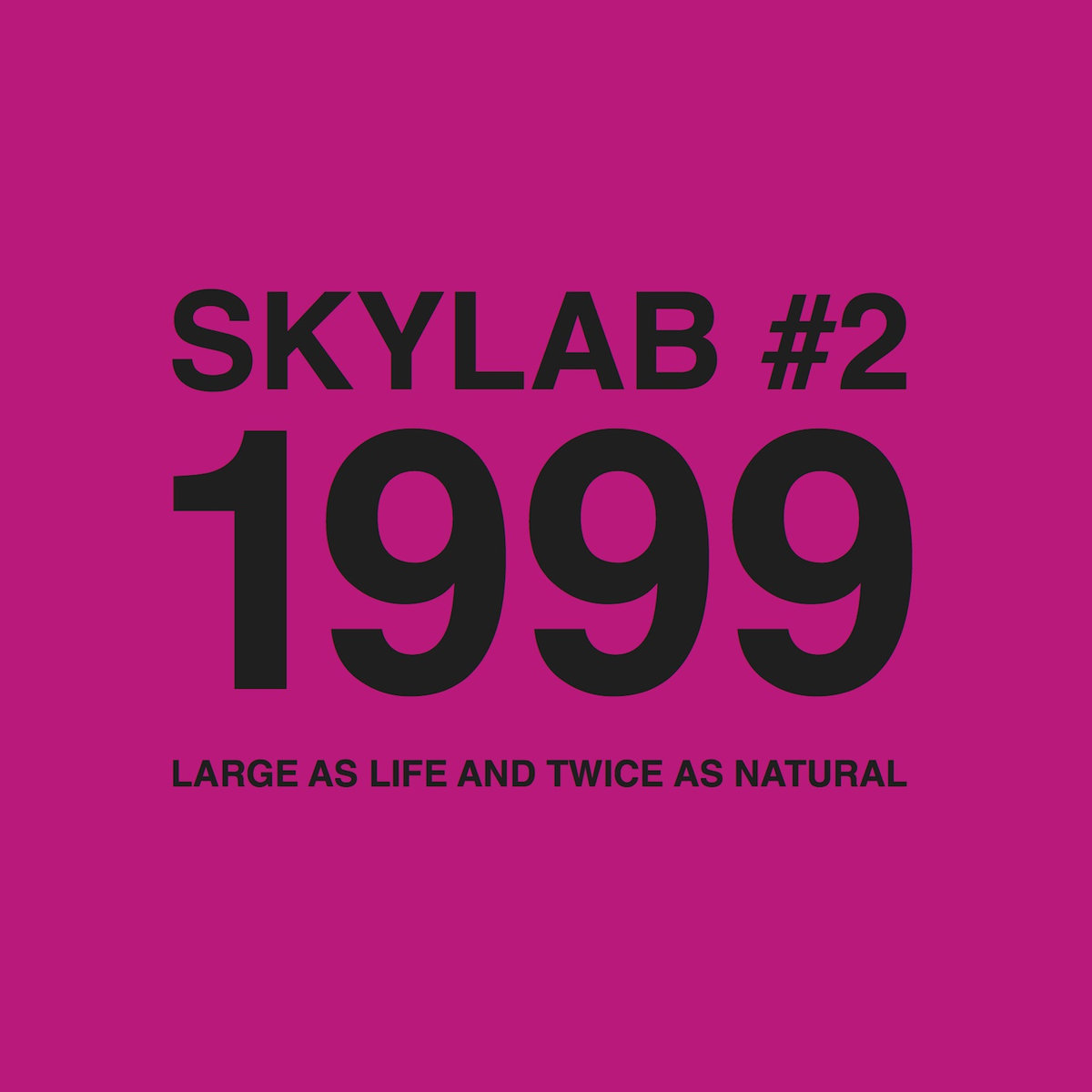
17. Skylab #2: 1999 “Large As Life And Twice As Natural” (Eye Q , 1999)
Skylab was a short-lived collective composed of Matt Ducasse, Howie B and the Japanese duo of Tosh and Kudo, aka Love TKO from Major Force. They released two albums on Sven Vath’s Eye Q label before disappearing, and their work was among the better but lesser-known of the trip-hop era. Ducasse has gone on record to state that their attachment with the genre was unintentional and that he saw their work as “more expansive, […] more in common with collage music […] or soundtracks.” And yet, those ideas were also at the heart of what the best trip-hop could be. In many ways Skylab were not so different to Portishead in both their intentions and execution. Their second album was released just as the label folded, leading it disappear into the cracks of time until a reissue by Tummy Touch earlier this year. Howie B had left by this point, and vocalist Debbie Sanders joined the trio to craft a beautiful record which really goes out there and was praised by both critics and knowledgeable fans.

16. Laika Silver Apples of the Moon (Too Pure, 1994)
Emerging from post-rock band Moonshake, Laika orbited the trip-hop genre without succumbing to many of its less flattering trappings. When guitarist and vocalist Margaret Fiedler commented in 1995 that her band was “just like trip-hop, but much much faster,” she was doing herself a massive disservice. A cursory listen might not even reveal too many obvious similarities – like Portishead, Laika were taking elements of post-rock, krautrock and certainly hip-hop to provide something reactionary, and different from the pervasive, laddish Britpop that was polluting the charts at the time. While their contemporaries Stereolab (and later, Broadcast) were experimenting with drum machines and synthesizers, Laika were integrating samples and a deep passion for jazz and dub. Silver Apples of the Moon is one of the most singular albums on this list, and one of the most rewarding.

15. Nightmares on Wax Smokers Delight (Warp, 1995)
Few records from this era quite capture the nexus of styles that trip-hop could represent at its best than Nightmares On Wax’s second album for Warp. Pulling from the same influences that defined the late 1980s rave explosion, Smokers Delight reconfigured the UK’s summer of love for the Discman generation while remaining just as suited to chill-out room comedowns or Ibiza sunset sessions.

14. REQ One (Skint, 1997)
Sure, Skint might still be best known for breaking Fatboy Slim, but don’t turn away just yet. Brighton-based producer (and sometime graf writer) REQ offered up one of the most blunted takes on the genre, almost by accident. His compositions didn’t pander to the popularity of the growing trip-hop scene, instead dwelling in a noisy, near-ambient back room. He made hip-hop instrumentals that sounded like they were being beamed in from a parallel universe via 14.4kbps modem, and in doing so, avoided being both pigeonholed and, well, popular. His brilliant debut album One has barely dated, fitting as well alongside DJ Spooky or even Dälek as it does anything the Bristol scene had to offer. One sounds, at times, like an MPC tumbling down a distant stairwell into a muddy lake, and we couldn’t think of a better recommendation than that.

13. Crooklyn Dub Consortium Certified Dope Vol.1 (Wordsound, 1995)
Skiz Fernando Jr.’s Wordsound label was in many ways the dubbed-out New York answer to Mo’ Wax, a home for what its founder coined dub-hop: music that blended the dusty boom bap that ruled the city at the time with the mixing desk mysticism of Jamaican dub. Certified Dope Vol.1 was Fernando’s attempt at cataloguing the music of like-minded artists who populated the Greenpoint and Williamsburg neighbourhoods in the early 1990s, including the likes of We™, Dr. Israel and Bill Laswell. Swinging like a pendulum between full-on dub and head-nod instrumentals, the compilation was one of the first to highlight the parallels between hip-hop’s sampling aesthetic and Jamaica’s dub.

12. DJ Krush Meiso (Mo’ Wax / Sony, 1995)
I imagine that choosing a favourite DJ Krush album is a little like asking parents to pick their favourite kid. A perfectionist who infused an American cultural import with the meticulousness of his own culture, the Japanese producer was the Far East’s answer to DJ Shadow, and together they would become Mo’ Wax’s flagship artists. On Meiso he dug for samples and looped them with the same precision, sensitivity and attention to detail as the finest calligrapher or ukiyo-e artist. The addition of CL Smooth, The Roots’ Black Thought and Malik B as well as Big Shug and Guru showed that trip-hop’s instrumental aesthetic could also provide the backdrop for some fine rap moments.

11. David Holmes Let’s Get Killed (Go! Beat, 1997)
For his second album, Belfast’s David Holmes walked around New York on acid recording voices and sounds. The results were weaved into the music for Let’s Get Killed which, like his 1995 debut, acts as a sort of soundtrack for an imaginary movie. The process also resulted in one of the best albums of the era – a psychedelic collage of rhythms, textures and styles that jumps between hip-hop, dub and dance music and rests on the back of Holmes’ urban trip. Let’s Get Killed has aged gracefully and still sounds just as engrossing as it did nearly 20 years ago.

10. DJ Spooky Songs of a Dead Dreamer (Asphodel, 1996)
Say what you like about Spooky and his over-explanation (those liner notes) and academic slant, Songs of a Dead Dreamer might sound better now than it did back in 1996. Hobbled at the time by the “illbient” tag, Spooky had come to the same conclusions as many of his European contemporaries: that a blend of hip-hop rhythms, dub bass and ambient soundscapes sounded pretty damn inspiring. Songs of a Dead Dreamer is his crowning achievement, and while its construction is relatively simple – loops fed through Spooky’s desk and piped through various effects – the effect is hypnotic and beguiling. While others may have pilfered from dub at a surface level, Spooky was using the Jamaican techniques (mixing board trickery, tape delay etc) to produce alien soundscapes that were a million miles from the comparatively safe sounds of Up, Bustle and Out or Funki Porcini.

9. DJ Cam Abstract Manifesto (P-Vine, 1996)
Soon after his debut in 1994, Paris’s DJ Cam positioned himself as the European equivalent to DJ Krush and DJ Shadow – a hip-hop enthusiast capable of weaving together abstract, blunted beats with finesse. Within a few years, he’d parlayed his underground kudos for an attempt at more standard rap fare. Abstract Manifesto is one of his lesser-known releases, a Japan-only album that tapped into the same minimal approach as Krush with added jazz flourishes and junglistic detours. ‘No Competition’ remains one of his best compositions to date, and a staple of sets from the era.

8. Major Force West 93-97 (Mo’ Wax, 1999)
It’s testament to the power of the ideas underpinning trip-hop at the time that this list includes an album spearheaded by a Japanese pop musician who had a hand in the new wave movement. Major Force was the name of Toshio Nakanishi’s hip-hop project, originally conceived in 1988 after a near-decade long infatuation with the music. Comprised of Nakanishi and former Melon bandmates Gota Yashiki and Masayuki Kudo, Major Force released new material as well as an anthology titled The Original Art-Form on Mo’ Wax in the mid-to-late 1990s. The latter is well worth your time, featuring early work and collaborations with Bristol’s DJ Milo, another link in the global thread that supported the music’s most daring leaps. In a 2014 interview, Nakanishi admitted that his fascination with hip-hop stemmed from recognising its links with Burroughs’ cut-ups, stating that “in collage, something happens where you never expected it to.”
93-97 compiles the group’s work during their years living in London, hence the twist to their name. It’s a brilliant and bizarre collection of ideas from a culturally out-of-place trio, who got it because they were so far from the “it” everyone was talking about. In those same years, Nakanishi and Kudo also worked as part of Skylab and you can hear similarities in this collection with the latter’s #1 debut album, especially in how the best of it isn’t the downtempo beats but the drawn-out compositions which have the feel of improvised studio jams. Later on in his interview, Nakanishi points out that London, at the time, felt as psychedelic as the 1960s, with the group seeking to inject some of this spirit into hip-hop, which in England was called trip-hop.

7. Various Artists Headz 2 (Mo’ Wax, 1996)
Just as the first Headz marked Mo’ Wax’s ascendance, the second compilation crowned its achievements and enshrined its best-known artists in an expansive collection of 53 tracks. While the first volume feels a little dated, Headz 2 has aged remarkably well, in part thanks to its broad representation of what trip-hop could be and where it came from. That means music from the Beastie Boys, UNKLE, Money Mark, The Black Dog, Dillinja, DJ Shadow, Danny Breaks, Tortoise and Urban Tribe among many. Headz 2 is also testament to James Lavelle’s impeccable A&R skills, and his talent for making sense of the various 1990s post-rave threads that informed the music.

6. Leila Like Weather (Rephlex, 1998)
Leila Arab’s debut album stuck out like a sore thumb when it appeared on Rephlex in 1998. Not because it was more extreme than Rephlex’s usual fare, but because it was actually a proper album, with songs, a narrative and little of the label’s usual tongue-in-cheek antics. Arab had pieced together a hazy, underwater daydream of a record with half-heard soul, pop and chiming ice cream truck electronics swirling together in a soup of memory and emotion. Not quite trip-hop and not quite illbient, it certainly wasn’t IDM either, despite an intriguing “post production” credit from a certain Richard D. James. It’s one of the most disarming records of the era, and manages to fulfil the promise of trip-hop without succumbing to its trappings. Like Weather might be the one record on this list that has the most in common with Maxinquaye , and that should tell you something about its quality.

5. Luke Vibert Big Soup (Mo’ Wax, 1997)
Luke Vibert’s first record under his real name, Big Soup summed up the Mo’ Wax catalogue perfectly, even if Vibert was only casually adjacent to the scene. Maybe that helped, as his productions have stood the test of time, sitting somewhere in between the sample-rich collages of DJ Shadow and the tight, precise constructions of DJ Krush and Major Force. The thing that Vibert had and which many of his peers always lacked was a sense of humour, and as track titles like ‘No Turn Unstoned’ might suggest, that helped remove some of the inherent pretentiousness of the scene, breaking down another barrier that walled it off to potential listeners. Vibert’s produced more complicated records since, and he’s produced more successful records too, but Big Soup is a perfect picture of a certain moment in time, painted with a British eccentricity that cuts through the posturing that would later derail the scene.

4. Massive Attack Blue Lines (Island, 1991)
In a 1998 feature for The New York Times , Guy Garcia posited Blue Lines as the blueprint for trip-hop, an argument that holds some weight if you consider that parts of the album were as old as the days of The Wild Bunch, from which the trio emerged. Blue Lines made its mark thanks to a mix of ideas: England’s love affair with sound systems; the comedown from its own summer of love in 1989; and hip-hop’s nascent dominance and rapacious aesthetic. Blue Lines was all of these things and more. Whether or not you consider it trip-hop is at this point in time purely a matter of personal beliefs and largely irrelevant considering its legacy. In 2009, Daddy G told The Observer : “What we were trying to do was create dance music for the head, rather than the feet.” A statement of intent for trip-hop if there ever was one.

3. DJ Shadow Endtroducing (Mo’ Wax, 1996)
DJ Shadow’s first album for Mo’ Wax is the kind of debut that places the bar so high in its mastery of a new musical vocabulary that even its creator can never hope to better it, forever living beneath the weight of what he’s accomplished. Endtroducing is the lingua franca of trip-hop, an album crafted by a hip-hop fanatic outside of any direct sphere of influence but his own. Like all of the releases on this list, to define Endtroducing as trip-hop is to limit it, to take away the transformative powers it had to imbue listeners with a new understanding of the potentials of hip-hop as an instrumental music. It’s not just the music that made hip-hop suck in 1996, it was also the critics who couldn’t conceive that albums like Endtroducing were what they claimed to be and nothing more.

2. Portishead Dummy (Go! Beat, 1994)
Portishead’s 1994 debut was soaked in the same DIY, melting pot approach that typified much of Bristol’s output at the time. From Massive Attack to Smith & Mighty and early Full Cycle releases, the city’s greatest hits in that decade were all about the blending of aesthetics with a brazen irreverence for rules. As a result the music felt both impossible and irresistible. Two decades on, Dummy still sounds as hypnotic and engrossing as it did then, a gritty take on hip-hop, 1960s movie soundtracks and traditional songwriting that laid bare the potentials afforded by sidestepping rigid genre formats.

1. Tricky Maxinquaye (Island, 1995)
This is the one, really. Tricky named his debut solo album after his mother, Maxine Quaye, and that should already indicate just how personal the record is. He’d sharpened his skills as a member of Massive Attack (indeed some of his rhymes from Blue Lines were recycled here), but his solo material went far beyond his former collaborators’ scope. Tricky was pulling from a darker well, and allowed his struggles, both external and internal, to sit at the album’s epicentre. The result was some of the most tortured and original electronic music cut to wax which gave birth to an era where “weird” became fashionable.
He was assisted by his then-girlfriend Martina Topley-Bird, whose nonchalant purrs offered a foil for Tricky’s hoarse raps. She was the smooth to Tricky’s tab-addled rough, and grounded the project for many listeners, no doubt helping people to lump it in with the similarly located Portishead.
Tricky hated being labeled trip-hop (“This is not a coffee table album. I don’t think you can have dinner parties to it,” he stated in 1996) and has rallied against it ever since, but there can be no argument that, for better or for worse, he left an indelible mark on British music, electronic and otherwise. If covering Public Enemy’s racially charged ‘Black Steel in the Hour of Chaos’ and recasting Chuck D as a mixed-race female from Bristol (singing, instead of rapping) isn’t hitting the genre’s conceit squarely in the face, we’re not sure what is. “If I supposedly invented it, why not call it Tricky-hop?” he said, before releasing Pre-Millenium Tension . He wasn’t wrong.
More from Featured Top

The Vinyl Factory celebrates art and sound with immersive exhibition at 180 Studios
Thursday, April 11

Interview: Lyra Pramuk
Friday, April 5

Interview: 404.zero
Friday, March 29

Feature: object blue
Friday, March 22

Interview: Martine Syms
Friday, March 15

Interview: Rabit
Friday, March 8

Interview: Ivan Michael Blackstock
Friday, February 23

Interview: VTSS & Actual Objects
Friday, February 16

Interview: Theo Triantafyllidis
Monday, February 12

United Visual Artists: Synchronicity
Wednesday, February 7
More from Featured Stories
9 years ago
2 months ago
3 months ago
4 months ago
5 months ago
9 months ago
11 months ago
12 months ago
2 years ago
Early Breakfast with Gary King 4am - 6am
Now Playing
Two Hearts Phil Collins Download 'Two Hearts' on iTunes
The 10 greatest trip-hop bands of all time
22 February 2023, 11:52
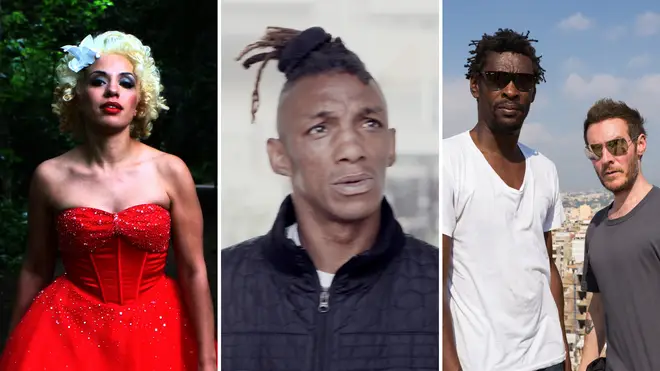
By Tom Eames

Trip-hop emerged in the 1990s as a leading force of downtempo electronic music.
Originating largely in Bristol in the early 1990s, trip-hop has been described as a psychedelic mix of hip-hop and electronica, with slower tempos and an atmospheric style. It also uses elements of jazz, soul, funk, reggae, R&B, and other genres, as well as often sampling film soundtracks and other sources.
Trip-hop was first coined by Mixmag , and it soon had commercial success by the second half of the decade.
From its pioneers of the '90s to the artists they influenced, here are the greatest trip-hop artists:

Morcheeba - Blindfold (Official Video)
Formed in the mid-1990s with singer Skye Edwards and brothers Paul and Ross Godfrey, Morcheeba emerged with sublime influences of rock, folk and downtempo, becoming a leading force in the trip-hop movement, starting with 1996's Who Can You Trust?
They have released 10 studio albums since 1995, with the latest being 2021's Blackest Blue .
Although they have moved on to other genres since their early trip-hop days, they still must be counted as one of the genre's greatest acts.
Sneaker Pimps

Sneaker Pimps - 6 Underground (Official Music Video)
Formed in Hartlepool in 1994, Sneaker Pimps' debut album, Becoming X was a seminal trip-hop LP in 1996.
Best known for the single '6 Underground', the band takes its name from an article the Beastie Boys published in their Grand Royal magazine about a man they hired to track down classic sneakers.
The band was created by electronic musician Liam Howe and guitarist Chris Corner, and then later recruited singer Kelli Ali (then known as Kelli Dayton).
After a long hiatus, the group returned with Howe and Corner in 2016, and they finally started releasing new music in 2021.
Little Dragon

Little Dragon - Twice
Swedish band Little Dragon hail from Gothenburg, having formed in 1996.
The band currently consists of singer Yukimi Nagano, Erik Bodin (drums), Fredrik Wallin (bass) and Håkan Wirenstrand (keyboards).
Their first release was the incredible single 'Twice' in 2006, and they brought out their debut album a year later.
Nagano was in her first year in high school when she met seniors Wallin and Bodin. The three of them would meet up after school to jam and play records, and their band name was inspired by the 'Little Dragon' nickname Nagano earned due to the "fuming tantrums" she used to throw while in the studio.

UNKLE - Rabbit In Your Headlights
UNKLE was founded in 1992 by James Lavelle.
In 1997, Lavelle brought in DJ Shadow to work on his debut album, which was released a year later. The album featured collaborations with the likes of Thom Yorke (Radiohead), Mark Hollis (Talk Talk), Mike D (Beastie Boys), Badly Drawn Boy and Richard Ashcroft (The Verve).
UNKLE as an outfit still exists today, though Lavelle has featured various incarnations of the collective, hiring a wide range of guest musicians and producers along the way.
His most recent studio album release with 2017's The Road: Part 1.
Martina Topley-Bird

Sandpaper Kisses
English singer and multi-instrumentalist Martina Topley-Bird first found fame when she featured on Tricky's debut album, Maxinquaye in 1995.
She also worked with him on his subsequent albums Nearly God and Pre-Millennium Tension, and then in 2003, she released her debut solo album Quixotic. The album was a critical hit and earned her a Mercury Prize nomination.
She has since worked with the likes of Gorillaz, Diplo and Massive Attack among others, and her track 'Sandpaper Kisses' has been covered Stephen Marley and sampled by The Weeknd.

Lamb - Gorecki
Electronic music duo Lamb formed in 1996 in Manchester, and consist of producer Andy Barlow and singer-songwriter Lou Rhodes. Rhodes' distinctive vocals gave them a uniquely beautiful sound, and no doubt inspired the likes of The Knife and Goldfrapp.
Their brand of trip-hop is also influenced drum and bass and jazz, and are best known for their singles 'Górecki' and 'Gabriel'.
Despite a hiatus in the 2000s, they have continued to release music, with their most recent being 2019's The Secret of Letting Go .

DJ Shadow - Midnight In A Perfect World
Speaking of DJ Shadow...
Joshua Davis is an American DJ, songwriter and record producer, known for his famous alter ego. His debut studio album, Endtroducing..... was released in 1996.
DJ Shadow's music often involves manipulating samples, bringing in rare pieces of music and sound clips, from all kinds of genres, particularly on his early albums.
His most recent LP was the double album Our Pathetic Age in 2021.

Portishead - Glory Box
Portishead - named after the place in Somerset, formed in 1991 in Bristol. Comprising of singer Beth Gibbons, producer Geoff Barrow, and musician Adrian Utley, engineer Dave McDonald is also sometimes credited as the fourth member.
- The Story of... 'Glory Box' by Portishead
Their 1994 album Dummy brought together hip-hop production with emotive vocals from Gibbons, creating a particularly atmospheric and cinematic sound. It was one of the albums that defined trip-hop as a growing genre.
Portishead themselves have disliked being associated with the genre, and would later move away from the sound on later albums.

Tricky - 'Black Steel' (Official Video)
British artist Tricky was raised in Bristol, and began his career as an early member of Massive Attack.
He soon began a solo career with his debut album, Maxinquaye , in 1995. It instantly won him huge critical acclaim, and he released four more studio albums before the end of the decade. His most recent album was 2020's Fall to Pieces .
Tricky is considered a pioneer of trip-hop, with his style known for being often dark in tone, and blending cultural influences and genres, such as hip-hop, rock and reggae.
Massive Attack

Massive Attack - Unfinished Sympathy
Trip-hop pioneers Massive Attack formed in 1988 in Bristol, led by Robert '3D' Del Naja, Adrian 'Tricky' Thaws, Andrew 'Mushroom' Vowles and Grant 'Daddy G' Marshall.
Their debut album Blue Lines was released in 1991, with the single 'Unfinished Sympathy' considered one of the greatest songs of all time, let alone trip-hop.
1998's Mezzanine - containing the classic track 'Teardrop') and 2003's 100th Window were also UK number ones.
They have won various awards of the years, and have sold over 13 million copies worldwide.
Like Portishead, they have never been a massive fan of the 'trip hop' label. Daddy G said in 2006: "We used to hate that terminology [trip-hop] so bad. You know, as far we were concerned, Massive Attack music was unique, so to put it in a box was to pigeonhole it and to say, 'Right, we know where you guys are coming from."
Latest Chill News and Features
See more Latest Chill News and Features
Smooth Chill presents new show Chillout Classics featuring iconic tracks
Portishead's beth gibbons unveils new solo single 'reaching out' ahead of debut album release, london grammar announce new album the greatest love led by new single 'house', moby announces special one-off uk show to celebrate 25th anniversary of play, nils frahm to headline first jazz cafe festival in london this september, listen to smooth chill, smooth playlists, smooth's all time top 500, smooth soul, smooth country hot hits, smooth chill concentration, smooth podcast picks, they don't teach this at school with myleene klass, take that: this life, runpod with jenni falconer, the news agents.
Penn’s Student Bands Get The Best of Both Worlds
Ahead of our inaugural “Street Sessions” band showcase, Street gets the inside scoop on our favorite Penn musicians
Inside the Penn Museum’s Efforts to Respect Native American Origins of Artifacts
As new federal regulations come into effect, the Penn Museum is continuing to rectify their previous mistakes.
Class Clown Town
Penn’s comedians aren’t joking about the highs and lows of collegiate comedy.
Ego of the Week: Kiln Chen
This senior is embracing her community and identity wherever she goes.
Ring, Ring, Naveen’s Calling!
Striving to make communication accessible for all, Naveen Albert is installing payphones throughout the city.
Ego of the Week: Katelyn Candido
This aspiring neurosurgeon acts as a compassionate older sister to her two siblings and her pre–med mentees.
Embracing the Amateur
The imperfect brushstrokes that make up an artist’s “perfection”
Non–Strangers
At what point does a stranger become a non–stranger?
How do you tell a love story you don’t believe is over yet?
Francis Ford Coppola is Going All In Again
The legendary director will finally release his long–gestating dream project, ‘Megalopolis’ this year.
Watching TV on TikTok
Ever spent 4 hours down a rabbit hole watching 'Pen15' On TikTok?
Percy Jackson on Disney+
A childhood cultural phenomenon beyond the screen
Julia Pratt on Finding Belonging Between Her Melodies
This Philadelphia native is making songs that she wants to listen to and we can't get enough.
Adrianne Lenker’s Bright Future is Daringly Imperfect
The Big Thief frontwoman’s new album is a lyrical and atmospheric tour de force.
Spotify Killed the Radio Star
What does the rise of streaming mean for artists and listeners?
The Boundaries of Expression Are Being Redrawn
Exploring the unexpected synergy between creativity, accessibility, and artificial intelligence.
Celeste Ng is Questioning Everything
Visiting Penn this past week, this critically acclaimed novelist explains how writing helps her understand the world.
Discovering with Mom at Art Miami
I took my mom to Art Miami and this is what she liked
Take It to the Streets: What to Do in Philly this Month
This month: cherry blossoms, food trucks, art exhibits—and lots more to explore.
The Girls are Fighting... And That's Okay
A look into Nicki Minaj and Megan Thee Stallion's rap feud
My New Little Red Book
A new Chinese cultural revolution is proliferating across the digital beautysphere.
Overheards February 2024
This Month: botox, blowjobs, and bisexuals.
Overheards December 2023
This month: super stylists, super villains, and super sloppy top.
Overheards November 2023
This month: hummus, hoagies, and homophobia.
34th Street Magazine is part of a student-run nonprofit.
Please support us by disabling your ad blocker on our site., hell is round the corner: an autopsy of trip-hop, let's discuss the record–scratching, tear–jerking, soul–sucking vibes of the '90's greatest export..
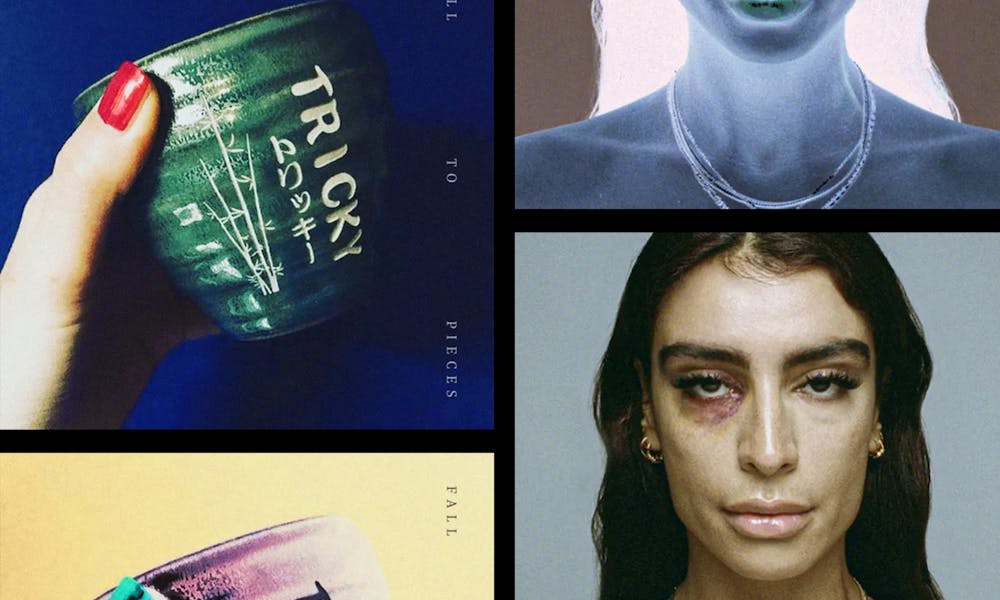
Close your eyes. Imagine, if you can, what the '90s were like. Not the literal day–to–day hustle and bustle, but the general mood. It's the middle of the night, and you're walking down a street. Sewer fumes obscure your vision, but it doesn't matter, because you haven't decided where you're walking to yet. Your baggy jeans and Nirvana tee are fashionably grimy, covered in tiny circular burns and beer stains. You take a long, last drag of your dying cigarette before stamping out the embers, extinguishing the final light of the dark alley you just turned down. Your headphones drown out the incessant rumblings of city life: ever so slowly, the hiss and crackle of vinyl pops fade in, washing out your ears like auditory smoke. "Give me a reason to love you," the lead singer croons over a wailing guitar solo.
In the '90s, one sound reigned supreme: the powerfully dark, noir–influenced vibes of trip–hop. I was born in 1999—I missed out on the actual experiences of the '90s—but there's something about trip–hop that allows us to tap into the zeitgeist of decades past in a way that a lot of genres can't do. The music is foreign yet instantly familiar; it's dingy, minimal, slow, gritty, and ever so sexual, yet it exists solely in a different era. Trip–hop sounds like an after–hours event at an after–hours nightclub, when all of the uppers have worn off and the intoxicating aura of lethargic exhaustion clings to the sweat–soaked floors.
Trip–hop started and ended in Bristol, England. In the early 1980s, a sound system , t he Wild Bunch , started making waves in the Bristol underground scene. By fusing together a massive range of genres (especially old punk, R&B, and reggae records) to create tired, washed–out beats, they developed an entirely new style of music: trip–hop. Key members of the Wild Bunch included—among many others— Tricky and Robert Del Naja .
Del Naja, Tricky, and a few other members of the collective eventually formed Massive Attack. Their first album, Blue Lines , came out in 1991 and essentially laid the foundations of the genre in the mainstream. Their most notable album, though, is 1998's Mezzanine . They've released a few other records since then (their last one, Heligoland , came in 2010), but the decline of Massive Attack more or less marked the decline of trip–hop.
Tricky left Massive Attack at some point after its inception, and began releasing his own solo material. His 1995 album, Maxinquaye , was a landmark release for trip–hop. The music on Maxinquaye ranges from industrial rock remixes of Public Enemy tracks to chill–inducing, melodramatic displays of vocal acrobatics. Trip–hop sounds like a lot of things, and Maxinquaye was a reminder that above all else, trip–hop was as secretive and sensual as a midnight hook–up.
The third notable trip–hop pioneer is Portishead. Though they don't have any formal ties to the Wild Bunch, their 1994 album, Dummy , is widely regarded as the definitive trip–hop album, firmly cementing the collection of sounds and influences into a coherent genre. They've released just two other albums since then— Portishead in 1997, and Third in 2008—but are more or less inactive now.
Tricky, then, is the only member of this unholy trinity of trip–hop troublemakers who still consistently releases music. To be frank, his new stuff isn't good. It's still trip–hop, sure, but it hasn't translated well to 2020. His latest album, Fall to Pieces , makes for an especially embarrassing listen. How could one of the progenitors of the style misunderstand it on such a fundamental level, only three decades later? For Tricky, the minimal aesthetics of the genre have given way to unfinished beats, boring melodies, uninspired samples, and lifeless vocals. It seems he's mistaking whispered platitudes of edginess for genuine gloominess and slow, boring drums for feelings of cultural malaise. The one track worth listening to, "Running Off," still offers nothing of note other than a slightly interesting beat.
That's it, then. Trip–hop is officially dead; its creators have either abandoned the sound, given up, or can no longer inspire similar feelings of genuine dread that carried the music through the '90s. There haven't been any significant revivals like other genres have seen, and none of the smaller acts that filled out the Massive Attack/Tricky/Portishead trinity gained large enough followings to survive. It will forever be a relic of the past, a cultural touchstone for an era gone by.
The one artist still maintaining the dark, grimy aesthetics of the genre, while releasing incredibly malaise music, is Sevdaliza . Iranian–born and Amsterdam–residing, Sevdaliza released her sophomore album, Shabrang , the same day Tricky's Fall to Pieces came out. Where Tricky's effort was boring and uninspired, Sevdaliza's album is just as experimental as it is an homage to trip–hop's heyday.
"Rhode," for example, draws directly from Portishead's Third , culminating in a disturbing instrumental break that carries the demented fury of a circular saw slicing through bone. Other songs on Shabrang reference trip–hop in a similarly direct way: "All Rivers At Once" is a slow–burning, moody guitar jam; "Lamp Lady" uses a dusty, downtempo drum sample; "No Way," "Habibi," and "Gole Bi Goldoon" showcase Sevdaliza's versatile soprano vocals in a way that rings eerily similar to Portishead's Beth Gibbons.
Discussing trip–hop in the present tense is a futile task. The genre peaked decades ago, and despite notable newcomers like Sevdaliza still showcasing different, innovative sounds, trip–hop will forever remain a window into the sights and sounds of the 90s. Let it die a dignified death: we can always spin our favorite records again, but we can't as easily repair a tarnished legacy.
More Like This
Pennconnects, newsletters.
Get 34th Street's newsletter, The Toast, delivered to your inbox every Friday morning.


What is considered trip hop?
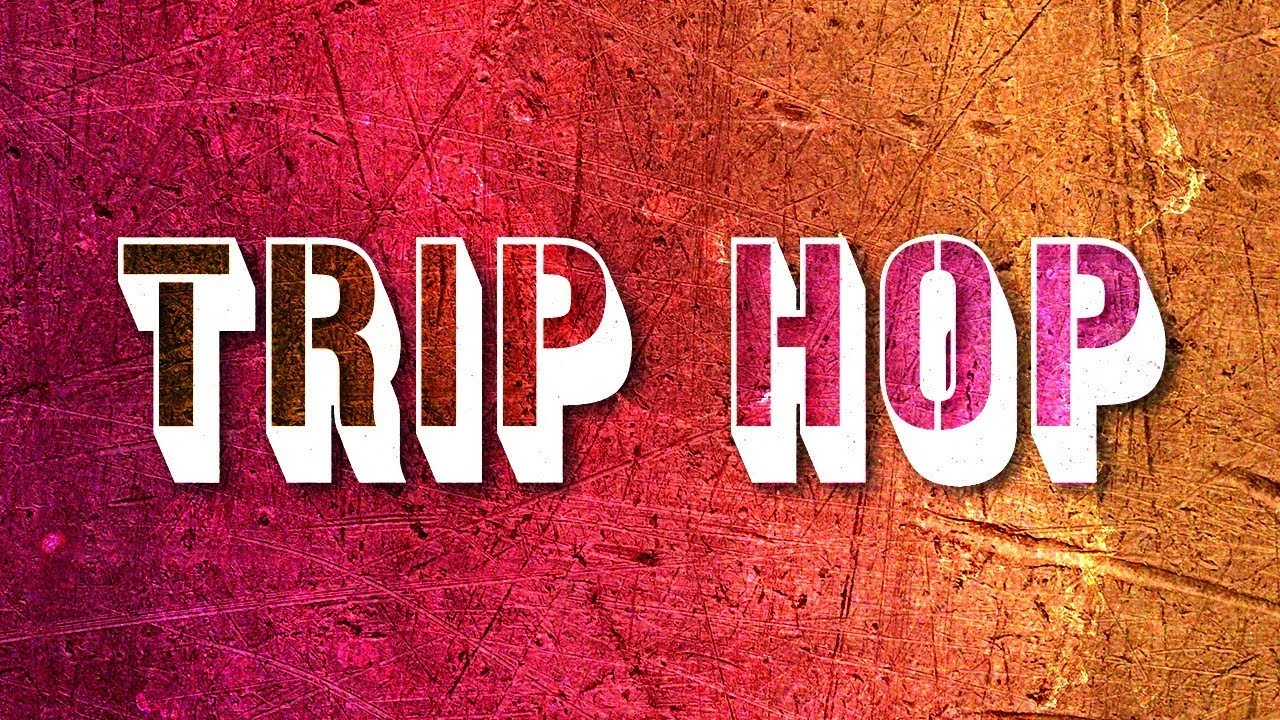
Trip-hop is an experimental musical genre that blends elements of hip-hop, Jamaican reggae, acid jazz, and electronic music to create a unique sound. It features psychedelic, downtempo elements and emphasizes bass-heavy drumbeats. A majority of trip-hop artists draw inspiration from 1970s post-punk, jazz, and funk.
What is the difference between hip-hop and trip-hop?
What makes trip-hop different from hip-hop, what type of music is a trip hop song, what is the difference between hip hop and rap, what is the difference between lo-fi hip hop and trip-hop, what does trip mean in music, what is included in hip-hop, what makes a trip-hop beat, is trip-hop pop, what is the difference between trip-hop and glitch hop, is joji trip-hop, what happened to trip-hop, what is the difference between trip-hop and downtempo, what’s the difference between downtempo and trip-hop, what is the difference between ambient and downtempo music, is downtempo music for everyone.
Trip-hop is a term coined in the mid-1990s, but the label has since been extended back to the late 1980s. What sets trip-hop apart from hip-hop is that it blends a more diverse array of genres into proceedings, such as acid jazz, post-punk, reggae, and electronica.
Trip hop differs from hip hop in theme and overall tone. Contrasting with gangsta rap and its hard-hitting lyrics, trip hop offers a more aural atmospherics influenced by experimental folk and rock acts of the seventies, such as John Martyn, combined with instrumental hip hop, turntable scratching, and breakbeat rhythms.
What sets trip-hop apart from hip-hop is that it blends a more diverse array of genres into proceedings, such as acid jazz, post-punk, reggae, and electronica. As a rule of thumb, trip-hop will mix samples with a more melancholic instrumental atmosphere and introspective lyrics.
Common musical aesthetics include a bass-heavy drumbeat, often providing the slowed down breakbeat samples similar to standard 1990s hip hop beats, giving the genre a more psychedelic and mainstream feel. Vocals in trip hop are often female and feature characteristics of various singing styles including R&B, jazz and rock.
While the terms “hip hop” and “rap” are often used interchangeably, hip hop refers to both a form of music and the beats that accompany it, while rap refers to the rhymes that follow the music. Hip hop and rap are often referred to as one, yet the two genres differ in their beginnings. NEW!! Imagine being a recording artist.
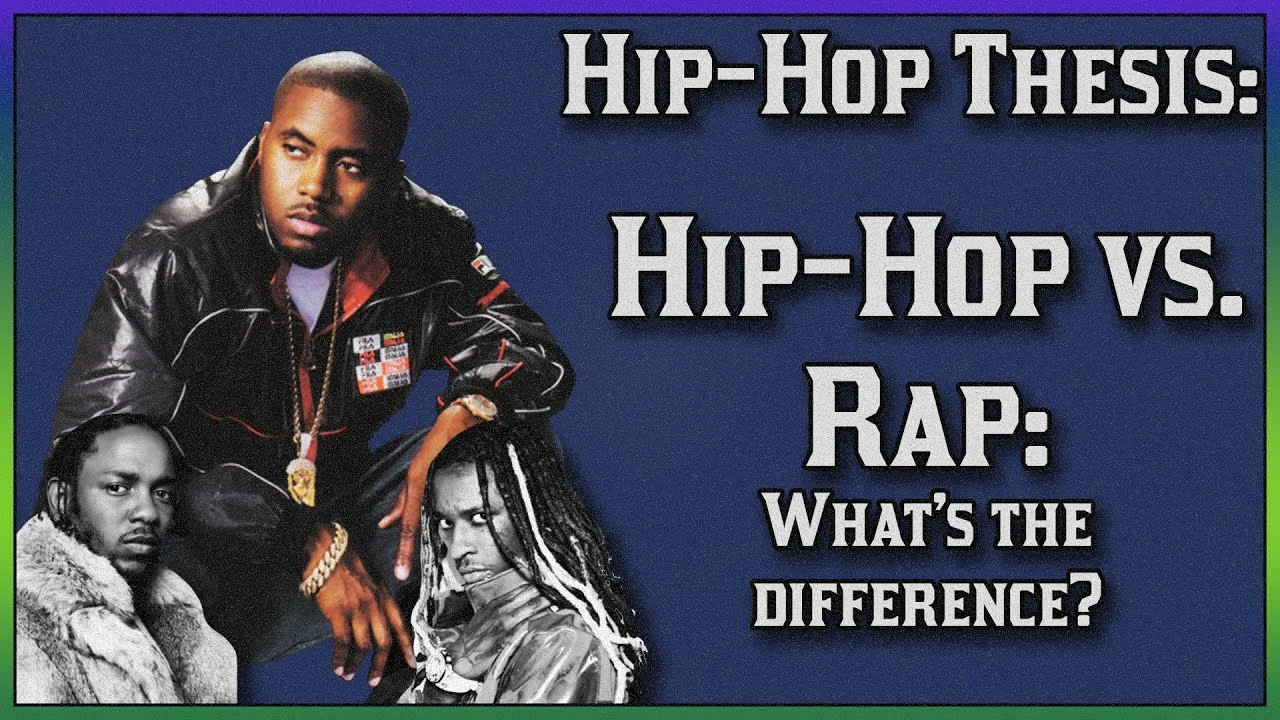
Answer: Lo-Fi Hip Hop is basically beats with a jazz background and Trip-Hop is more modern electronic beats with cutting and scratching. Lo-Fi Hip Hop is a more mature, smooth sound. Trip-Hop is more of a college sound (even though i still listen to Trip Hop long after i was introduced to it aft…
a type of popular dance music that has a slow beat, and is intended to create a relaxed mood. It is a mixture of hip-hop and reggae. Types of music. ambient music.
Although widely considered a synonym for rap music, the term hip-hop refers to a complex culture comprising four elements: deejaying, or “turntabling”; rapping, also known as “MCing” or “rhyming”; graffiti painting, also known as “graf” or “writing”; and “B-boying,” which encompasses hip-hop dance, style, and attitude, …
Trip-Hop borrows the technologies of vinyl records and sampling from Hip-Hop and Dub styles, blended with the reverb and delay processing also from the Dub/reggae genre.
Trip hop (sometimes used synonymously with “downtempo”) is a musical genre that originated in the early 1990s in the United Kingdom, especially Bristol….
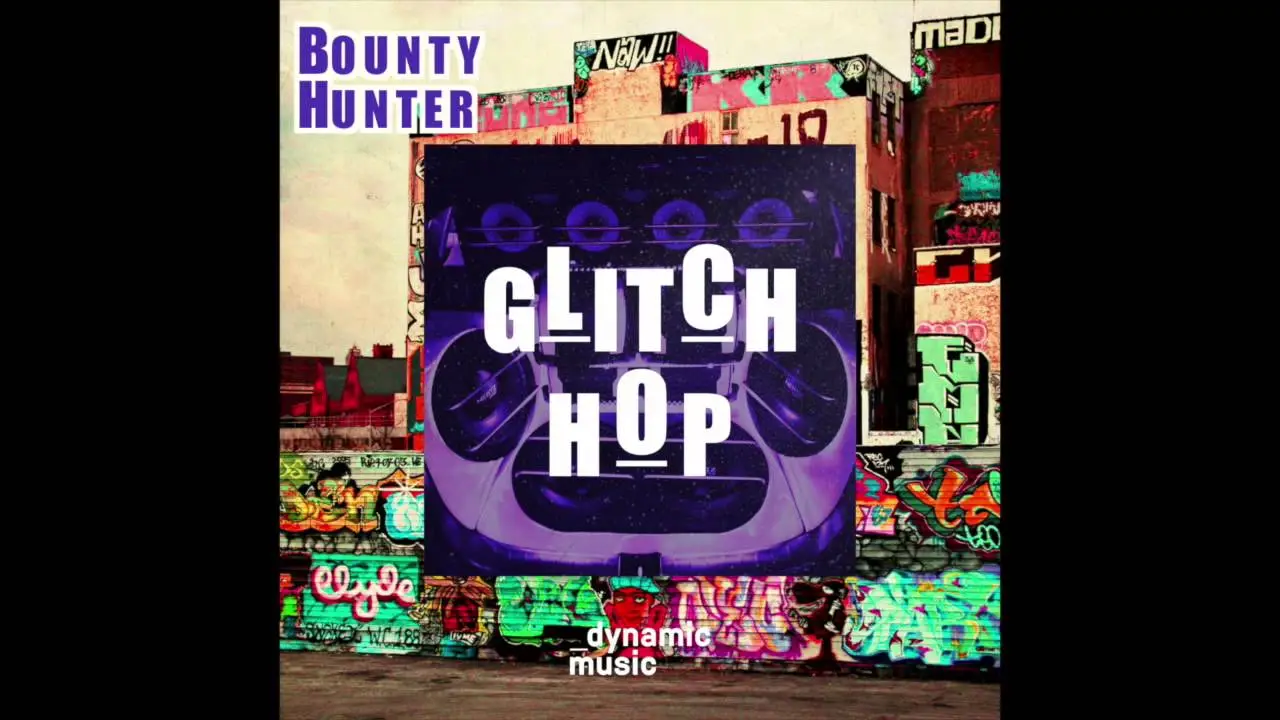
Trip-Hop is instrumental hip-hop, while glitch developed out of that and incorporates more experimental “glitch” sounds typically unwanted in music recording like equipment noise, software bugs, distortion and may use samples and rapping from the crunkier sounding rap songs.
Joji’s music has been described as trip hop and lo-fi that blends elements of trap, folk, electronic, and R&B. His songs have been characterized as having “down tempo, melancholic themes and soulful vocals” with “minimalistic production”.
Trip hop died on April 29, 2008, in Portishead, North Somerset, England, after a long illness.
The way I understand it is that Downtempo is “low tempo electronic music made for relaxing and is often instrumental”, while Trip Hop is “atmospheric low tempo electronic music made for nighttime listening and often has soul/r&b type singing”.
As one user on the Rate Your Music forum explains , “Downtempo is the more ambient version of trip-hop, incorporating elements of jazz, soul, and electronica with a focus on creating a relaxing atmosphere, whereas trip-hop is more beat-driven and emphasizes the hip-hop influence with more soul/r&b type singing.”
Downtempo is a genre of electronic music. It is similar to ambient music and is often used synonymously with trip-hop. But there are a few distinct differences between them. Unlike ambient, downtempo emphasize its beats. It also uses less earthy sound than trip-hop. Downtempo is remarkably similar to ambient music, but with more groove or beat.
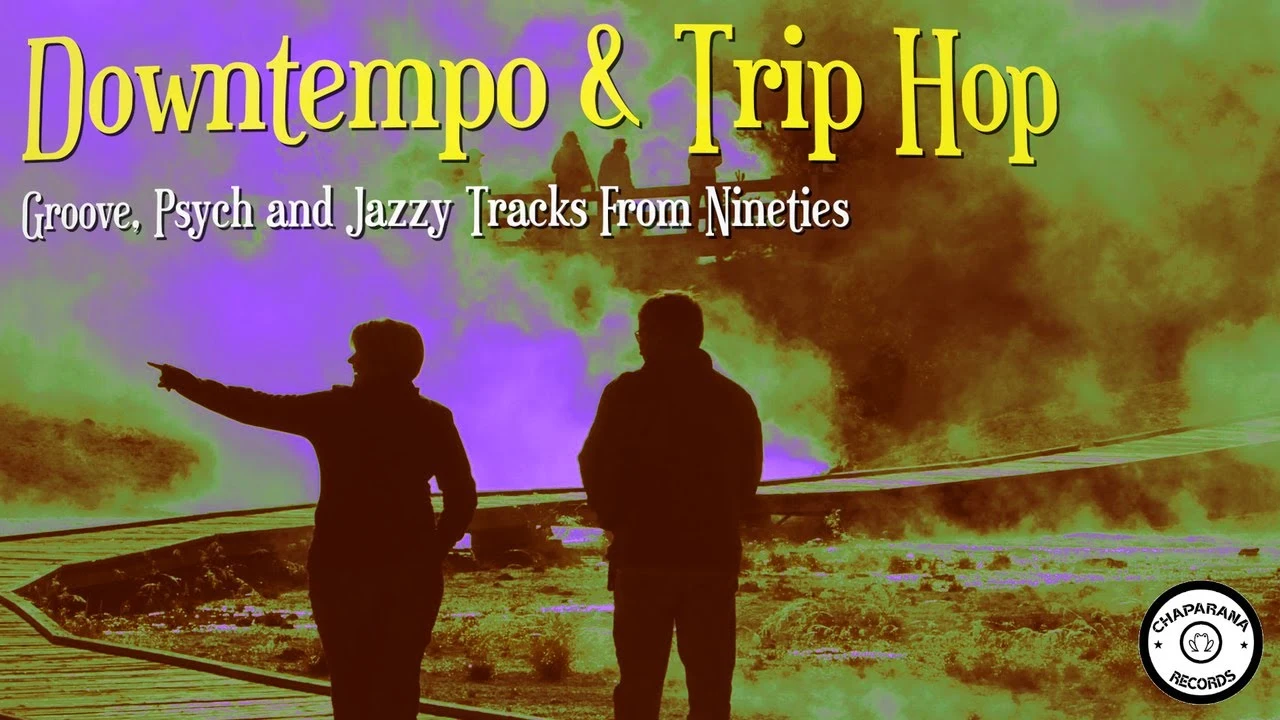
It is safe to say that downtempo is music for everyone. Even if it is not the kind of music, we will choose first thing at a party, it is arguably music everybody loves. Some music genres have their militant fans as well as their haters. With downtempo, it seems hard for anybody to hate the music.
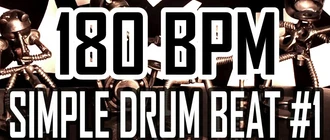
- Privacy Policy
- Cookie Policy
- Comments Policy
- Terms and Conditions
- Radio & Podcasts
- Privacy Notice
Organic Intelligence XXXI: The Pre-Trip Hop Bristol Underground Jonathan Wright , April 12th, 2024 08:52
In this month’s antidote to the algorithm, Jonathan Wright takes us on a trip to the fertile underground of 1980s Bristol. Photo of The Wild Bunch by @beezerphotos
One version of the history of trip hop, told surprisingly often, is of laid-back Bristolians stumbling upon a downbeat form of dance music almost by accident. It’s a tale that has little to do with striving to create anything new, or of cultural collisions and backstories, but rests on local musicians being, to quote Massive Attack’s Grant ‘Daddy G’ Marshall on the band’s work ethic, “lazy Bristol twats” who just happened upon what came to be called the Bristol Sound.
To understand why this idea is so clearly nonsense, remember how radical Massive’s Blue Lines (1991) sounded in the context of the year grunge broke – and indeed still sounds. Or listen again to the sense of melancholy and creeping fear that underpins Tricky’s claustrophobic Maxinquaye (1995). As for Portishead, to complete trip hop’s holy triumvirate, Dummy (1994) is an album of extremes, ice cool and precise yet also bluesy, anguished.
How to explain these albums? First up, banish all thoughts of Bristol as the gentrified, weekend-break destination of today, which is anyway a misleading picture. The centre of Bristol in the 1980s during high Thatcherism was a place pox-marked by abandoned and decaying spaces, the city as broken machine. It was Bristol where a decade of unrest in the nation’s urban centres began, when an April 1980 police raid against the Black and White Café in St Pauls, an area with a large British Afro-Caribbean population, was a catalyst for rioting.
Bristol was also a city with a vibrant and constantly mutating underground with strong roots in punk. To quote one of the late Mark Stewart’s favourite aphorisms, “There is the arrogance of power and what we got from punk was the power of arrogance.” It was a multicultural city too, with its own distinct sound system culture linked to the local reggae scene and the annual St Pauls Carnival. To this heady mix, add radical politics and graffiti artists such as Inkie, Massive’s Robert ‘3D’ Del Naja and, following on, Banksy.
Directly or indirectly, it’s striking how many of Bristol’s deepest cultural currents seem to flow through Stewart’s The Pop Group. According to Stewart, when the band put on early shows at the Barton Hill Youth Centre, those in attendance included Marshall, Del Naja and Milo Johnson, aka DJ Milo, all of whom would go on to be integral to The Wild Bunch sound system. Later, it would be Stewart who often brought back early hip hop records to Bristol from the USA. Later still, he took The Wild Bunch to London, where he introduced them to Newtrament, a Ladbroke Grove resident and electro pioneer who, rumour had it, got the newest hip hop records direct from his American father.
One of the spiritual homes of The Wild Bunch was the Dug Out on Park Row, a sticky and sweaty space where the collective honed their skills. In 1985, underground went overground when Bristol’s Arnolfini held the first British gallery exhibition of street art. Del Naja’s work was on the walls and, when The Wild Bunch performed at the gallery, a teenage Geoff Barrow, who would be mentored by Blue Lines producer Jonny Dollar, was among those in attendance.
In short, while there may have been spliff breaks along the way, trip hop didn’t just happen, it’s rooted in Bristol’s radicalism, its DIY ethic and, as the six tracks below reveal in their different ways, the pervasive influence of the city’s 1980s music scene.
Talisman – ‘Dole Age’ (1981, Recreational Records)
Like London and the West Midlands, Bristol was a centre for homegrown roots reggae in the late 1970s and early 1980s. Locally, the two biggest bands were Black Roots and Talisman, whose indie single ‘Dole Age’ says much about the world into which it was released. This was a time when Thatcher’s monetarist government prioritised controlling inflation over employment rates and the jobless total headed towards three million, a rate of more than 10 per cent. Although John Peel played the single and gave the band a session, Talisman never achieved sustained success or landed a major record deal. More generally, reggae and a love of deep bass are recurring themes in Bristol music. It’s no coincidence Massive Attack have so often worked with Horace Andy. For more on Bristol reggae, and indeed different stripes of alternative Bristol music from the 1970s and 1980s, visit the Bristol Archive Records site .
Mark Stewart & The Maffia – ‘Jerusalem’ (1982, On-U Sound)
So tall he loomed over most people, intense and direct to the point of bluntness, the much-missed Mark Stewart was intimidating to meet. And yet, when you talked to him or watched him talk to others, he had the knack of appearing to be completely engaged. This may well go some way to explaining both why he was so often a catalyst, someone whose very presence encouraged others to act. It helped too that he was uncompromising and always followed his own muse. “[The Birthday Party] truly loved them,” said Nick Cave of The Pop Group, “were mystified by them, playing their strange, utterly unique music non-stop, barely able to comprehend what it was we were actually listening to.” When The Pop Group finally imploded in 1981, Stewart simply carried on. His first single with The Maffia, produced by Adrian Sherwood, is a dub-infused take on Hubert Parry’s setting of William Blake’s ‘Jerusalem’ that, while it can be heard as a critique of Thatcherism, sounds prescient in the way it wrestles with notions of Englishness.
Rip Rig + Panic – ‘You’re My Kind Of Climate’ (1982, Virgin)
While Mark Stewart struck out as a solo artist, Pop Group multi-instrumentalist Gareth Sager and drummer Bruce Smith formed Rip Rig + Panic, named after a 1965 album by Roland Kirk. As the name suggests, the band, fronted by Neneh Cherry, had a sound that incorporated elements of avant-garde jazz, all well as post-punk and funk. Listen to the skittering ‘You’re My Kind Of Climate’, one of the band’s more accessible offerings, and it may seem extraordinary the band were signed to Virgin, but such were the times. Besides, Cherry was a huge talent who would go on to have a worldwide hit with ‘Buffalo Stance’ (1988), famously performing the song on Top Of The Pops when seven months pregnant. She was also important in encouraging Massive Attack, having known them since their days in The Wild Bunch, and chivvying them along to complete Blue Lines . To quote Grant Marshall, “We recorded a lot at her house, in her baby’s room. It stank for months and, eventually, we found a dirty nappy behind a radiator.”
Maximum Joy – ‘Why Can’t We Live Together’ (1983, Garage Records)
Arguably, the high post-punk era ran for from 1979-80, the years that albums such as Metal Box , Entertainment! and Closer were released. Then came synthpop, which smoothed out the angular experimentation of what went before. Except of course that’s too simple a narrative. Looking back, the early 1980s were years when things were in flux, with musicians looking for a way forward often drawing on disparate influences. Case in point: Maximum Joy’s final single, a cover of a 1972 soul hit by Timmy Thomas, calls to mind the funky twitchiness of A Certain Ratio yet seems to be aiming for pop’s mainstream, if only with its Heaven 17-esque backing vocals. British reggae visionary Dennis Bovell is on production duties. Maximum Joy grew from the ashes of Bristol post-punk band Glaxo Babies and, via guitarist John Waddington, who sadly passed in 2023, The Pop Group. If the single’s beats seem to anticipate what will follow, that’s maybe in part because one Nellee Hooper joined Maximum Joy as a percussionist in 1982. A record that represents both an ending and a beginning.
The Wild Bunch – ‘Tearin Down The Avenue’ (1987, 4th & Broadway)
If talent is volatile and convinced of its own vision, it was probably inevitable The Wild Bunch would be more influential than stable. This was after all a soundsystem collective that, alongside founder DJ Milo and rapper Willy Wee, featured at different points Nellee Hooper, who would join Soul II Soul prior to becoming a hugely influential producer, Adrian ‘Tricky’ Thaws and the three core members of Massive Attack when the band was founded, Grant Marshall, Robert Del Naja and guitarist Andrew ‘Mushroom’ Vowles. ‘Tearin Down The Avenue’, recorded for Island’s hip hop imprint 4th & Broadway by Milo, Hooper and Del Naja, then still better known as a graffiti artist, suggests musicians finding their way, perhaps too in thrall to American beats to be distinctive. Probably you had to be at The Wild Bunch’s club nights or sound clashes to get the full flavour. The single was never afforded a widespread release, but nevertheless represents a moment when the different currents of Bristol music begin to coalesce into something new.
Smith & Mighty – ‘Walk On…’ (1988, Three Stripe Records)
On the b-side of ‘Tearin Down The Avenue’ was a cover of ‘The Look Of Love’ featuring Shara Nelson (‘Unfinished Sympathy’) on vocals. Stark and melancholy, it’s sometimes cited as the recording that invented trip hop. But there are other contenders if you want to play this game too, notably production duo Rob Smith & Ray Mighty’s languid breakbeat take on another Burt Bacharach and Hal David song, ’Walk On By’, featuring Jackie Jackson on vocals. Both records, it’s worth highlighting, prefigure Portishead’s fascination with sophisticated 1960s pop. Smith & Mighty are also important to the story of trip hop because of their production work on Massive Attack’s first single, ‘Any Love’, released via Massive Attack Records in 1988. Smith & Mighty would go on to mix tracks for, among others, Fine Young Cannibals and Neneh Cherry, although there’s a sense of what might have been in that ffrr/London Records refused to release a debut album in 1989. Bass Is Maternal didn’t appear until 1995 and momentum was lost. To go back to where we started, Rob Smith was a member of one of the key Bristol reggae bands, Restriction.
SUBSCRIBE TO THE QUIETUS
If you love what we do, you can help tQ to continue bringing you the best in cultural criticism and new music by joining one of our subscription tiers. As well as the unparalleled joy of keeping the publication alive, you'll receive benefits including exclusive editorial, podcasts, and specially-commissioned music by some of our favourite artists. To find out more, click here.
SEARCH THE QUIETUS
Related articles.
- Portishead v Portishead Charity Football Match »
- HTRK - Work (Work Work) »
- John Robb On Massive Attack's Blue Lines - 21 Years On »
- 25 Years On: Tricky's Maxinquaye Revisited »
- Overcoming Fear Of A Massive Attack, Live In Paris »
MORE FROM JONATHAN WRIGHT
- Organic Intelligence XXXI: The Pre-Trip Hop Bristol Underground »
- Banishing Point: An Interview With Kavus Torabi »
- Evolutionary Spirit: An Interview With John Foxx And Ade Fenton »
- Julie Byrne - The Greater Wings »
- Mun Sing - Inflatable Gravestone »
MORE: SUBSCRIBER AREA
- Low Culture Podcast: The Cook, The Thief, His Wife & Her Lover »
- tQ's Exclusive Monthly Round-Up Playlist: March 2024 »
- Low Culture Essay: Jimmy Martin On Ministry’s With Sympathy »
- Community Of Ghosts: An Interview With Shovel Dance Collective »
Support tQ's work by becoming a subscriber and enjoy the benefits of bonus essays, podcasts and exclusively-commissioned new music. To find out more, click here.
- North of Purgatory: A Coma Diary »
- One for the Road »
- The Rumour Mill »
- It Started With A Mix »
- Escape Velocity »
- In Extremis »
- Quietus Artists Of 2008 »
- Remember Them... »
- Things I Have Learned »
- Rock's Backpages »
- A Quietus Interview »
- In Their Own Words »
- The Spotify Playlist »
- Sonic Router »
- Dragnet »
- In Conversation »
- Autobahn »
- Dr Rock »
- Columnus Metallicus »
- A Domino Halloween »
- Beyond The Hits »
- Quietus Artists Of 2009 »
- Anniversary »
- Fall Sound »
- Noel's Straight Hedge »
- 2010 A Glass Half Full »
- Quietus Artists Of 2010 »
- Baker's Dozen »
- Rockfort »
- Ten Songs »
- An Eastern Spring »
- Rum Music »
- Quietus Mixes & Radio »
- Hyperspecific »
- A New Nineties »
- Quietus Artists Of 2011 »
- Strange World Of... »
- The Long Lunch »
- Afrosonic »
- John Peel's Records »
- Hoody Who »
- The Calvert Report »
- Radio-Activity »
- Tape Adapter »
- I Am Demo Suzuki »
- Electro Chaabi »
- Track-By-Track »
- Complete Communion »
- Spool's Out »
- Radio »
- One Take »
- Quietus Charts »
- At Leisure »
- Junk Shop Classical »
- Album Of The Week »
- Reissue Of The Week »
- Subscriber Area »
- New Weird Britain »
- Columnfortably Numb »
- Live Reviews »
- Television »
- Art »
- Books »
- Black Sky Thinking »
- In Defence Of... »
- Mr Agreeable »
- I'm No Expert... »
- Dr Johnson »
- 2009 Wreath Lectures »
- Come On Fry Young »
- John Moore's Diary »
- 2010 Wreath Lectures »
- You Heard Me Wrong »
- Wreath Lectures »
- The Quietus Essay »
It looks like you're using an adblocker.
As a wholly independent publication, we rely entirely on our ad bookings to keep The Quietus going. Please whitelist our site in order to continue to access The Quietus.
10 Perfect Trip-Hop Albums With No Bad Songs
Crank up the bass... , things are about to get wobbly.
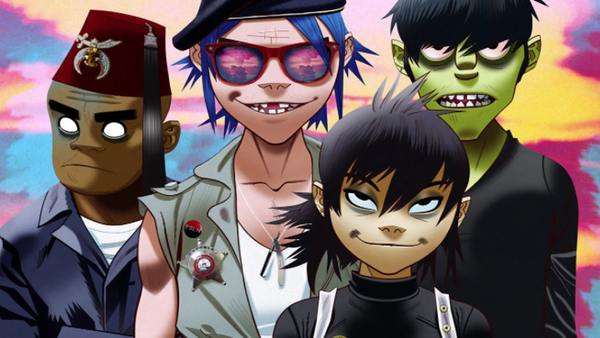
Trip-hop emerged during the early '90s. Born out of the underground electronic scene, this was the kind of music to stick on in the early hours, post rave. When your body could no longer dance, it was time for the sounds of downtempo ambience, to ease your mind into psychedelia-laced bliss.
The genre's most prominent early acts originated from the UK. The fusion of hip hop, with other genres, merged to create a sound of unique resonance. Its downtempo nature and reliance heavy-base driven beats, made it a staple for the alternative electronic scene. As the genre grew in scope and popularity it took on more forms. Cutting a fine line between etherial electronica and dark and dingy lo-fi.
Whether you want a bit of reggae-laced dub, blues-infused electronica, or some soul-rich downtempo, trip hop has you covered. From the UK based originators in Bristol, to the innovators on America's West Coast, and the more modern interpreters of the genre; these are some of the greatest trip-hop records to ever wobble a sound system.
10. The Mirror Conspiracy - Thievery Corporation (2000)
Although many consider trip-hop to have originated in Bristol, electronic acts in America were putting their own downtempo spin on things. Thievery Corporation formed during the '90s, in Washington D.C. Their first album was a mellow mix of world music and and hip hop samples.
The incorporation of wider ranging influences, on their second album, made the group hard to pin down, however. Early tracks like, Le Monde, utilised French vocals for a distinctly European sound. Whereas, Lebanese Blonde, laid on Middle Eastern themes. Coupled with the jazz stylings of vocalist, Pam Bricker. it's an instant mood setter. Not many tracks will simultaneously imbue you with a drive to get up and go, while imparting a sense of relaxation.
As the record progresses, it builds in momentum. More uptempo tracks like, Air Batucada, serve to move everything along in a satisfyingly subtle way. There'll be moments when you want to do nothing, but blissfuly surrender to the album's mood. At others you'll be pulled into an inescapable desire to dance.
Before engrossing myself in the written word, I spent several years in the TV and film industry. During this time I became proficient at picking things up, moving things and putting things down again.
Trip Out - Single
January 21, 2024 1 Song, 2 minutes ℗ 2024 Official Bread Getter Ent. LLC
More By OBG Bang Bang
Select a country or region, africa, middle east, and india.
- Côte d’Ivoire
- Congo, The Democratic Republic Of The
- Guinea-Bissau
- Niger (English)
- Congo, Republic of
- Saudi Arabia
- Sierra Leone
- South Africa
- Tanzania, United Republic Of
- Turkmenistan
- United Arab Emirates
Asia Pacific
- Indonesia (English)
- Lao People's Democratic Republic
- Malaysia (English)
- Micronesia, Federated States of
- New Zealand
- Papua New Guinea
- Philippines
- Solomon Islands
- Bosnia and Herzegovina
- France (Français)
- Deutschland
- Luxembourg (English)
- Moldova, Republic Of
- North Macedonia
- Portugal (Português)
- Türkiye (English)
- United Kingdom
Latin America and the Caribbean
- Antigua and Barbuda
- Argentina (Español)
- Bolivia (Español)
- Virgin Islands, British
- Cayman Islands
- Chile (Español)
- Colombia (Español)
- Costa Rica (Español)
- República Dominicana
- Ecuador (Español)
- El Salvador (Español)
- Guatemala (Español)
- Honduras (Español)
- Nicaragua (Español)
- Paraguay (Español)
- St. Kitts and Nevis
- Saint Lucia
- St. Vincent and The Grenadines
- Trinidad and Tobago
- Turks and Caicos
- Uruguay (English)
- Venezuela (Español)
The United States and Canada
- Canada (English)
- Canada (Français)
- United States
- Estados Unidos (Español México)
- الولايات المتحدة
- États-Unis (Français France)
- Estados Unidos (Português Brasil)
- 美國 (繁體中文台灣)

10 Of The Most Luxe Music Festival VIP Packages
F rom March to October, music lovers around the world celebrate "festival season" by descending upon dessert sands, lakeside parks, verdant fields and art district parking lots, seeking top-tier talent across rock, pop, hip-hop, dance and more.
While the chance to see Beyonce on the main stage or a long-sought comeback (Blink 182 with Tom Delonge, anyone?) is special in itself, a full day or four in the hot sun, sharing bathrooms with a few thousand strangers isn't always the picture of a perfect day. That's what VIP tickets are for, and some VIP packages are more luxe than others.
If you're a lifelong music fan in the market for a truly dreamy festival experience, check out the lineups at one of these festivals below. We vetted the VIP packages to make sure they go above and beyond.
From gourmet food trucks to private bathrooms, side-stage viewing platforms, all-you-can-drink offerings, on-site beauty bars and even golf-cart transportation, these are some of the most over-the-top VIP tickets the festival season has to offer.
The undisputed King of music festivals, the April festival in Coachella's Indio Valley, CA., is perhaps the most famous musical gathering in the world. Not only does it bring out an artist or band's best performance of a lifetime, it also breaks fashion trends, lures innumerable A-listers, and comes with some truly life-saving amenities. Rub shoulders with celebrities in the Coachella VIP and take full advantage of preferred parking lots, specialty food and drink vendors, air-conditioned restrooms and shaded seating areas. There are full cash bars just for VIP with shorter lines, as well as glamping options, and two very-special VIP sections offering Michelin-starred bites and more.
Every October in Miami, revelers dance from sunset to sunrise at this three-day, overnight event that brings some of the biggest names in rock, pop, Latin, hip-hop and electronic music. Previous headliners include Rosalia, LCD Soundsystem, Wu-Tang Clan, Porter Robinson, The Strokes and Herbie Hancock, and more than half of the bill is filled with homegrown Miami talent, giving the city's musicians a world stage. When you pay for the VIP package, you are treated like the star you are with expedited entry and elevated viewing areas, an air-conditioned lounge and private restrooms, specialty bars and priority reservations at local restaurants, first access to official festival after-parties, and all-you-can-drink beverage options.
EDC Las Vegas
If you're an EDM lover, you've surely made the trek or at least dreamt of experiencing the world-famous EDC Las Vegas. Another event that takes place from sunset to sunrise, this one comes to life each May in the middle of the Las Vegas Motor Speedway; filling the desert arena with massive stages, international DJs, roving art cars, costumed performers, and carnival rides and attractions. When you're a VIP headliner, you enjoy dedicated viewing platforms and private dance areas, exclusive lounge spaces and VIP concierge booths, fast passes to the Ferris wheel and other carnival rides, a custom commemorative show lanyard, air-conditioned bathrooms, VIP photo booths, mobile charging stations and lockers, body paint and beauty bars, kandi bracelet making stations, vegan and gluten-free craft cuisine, and so much more.
Governors Ball
New York City is always the place to be, but especially in June when Governor's Ball takes over Governor's Island, bringing with it the best in rock, pop, hip-hop and dance. Where else can you enjoy headline performances from Lizza, Odesza and Kendrick Lamar on the same weekend? Take in the summer sun in the city that never sleeps, and nab that VIP package in order to enjoy premium viewing areas, lounges and air-conditioned bathrooms, VIP concierge, lockers and mobile charging and more. The Platinum VIP package also includes front-of-stage and on-stage viewing access, a premium Platinum lounge with a full-service bar and dining, and more. From Queens? You get a discount on all of the above!
Lollapalooza
Lollapalooza was one of the first successful annual music festivals in the United States, bringing chart-topping talent across genres to cities across the country before relaunching as a stationary event in Chicago in the mid-2000s. Today, it remains a jewel of Chicago's calendar, bringing a once-in-a-lifetime musical experience to fans every August in the Windy City's downtown gem, Grant Park. When you come as a Lolla VIP, you get on-field viewing areas and unlimited access to on-site lounges (some of which have live streams of performances on jumbo screens), golf cart shuttle transportation between the Noth and South end main stages, and concierge services, among other goodies.
Take it a step further with the Platinum package which includes complimentary beer, seltzers and water; festival hair and glitter treatments, lockers and charging stations, exclusive merch and presale access to afters. Want even more? Cabana packages come with a luxury suite for 30 to 50 guests, all-day complimentary bar, grab-and-go snacks and dinner buffet, and more.
Rolling Loud Miami
Born and bred in Miami, Rolling Loud as become the largest hip-hop festival in the country with one of the most stacked lineups you've ever heard of. It's a who's-who of the modern state of the genre, with performances from Playboi Carti, A$AP Rocky, Travis Scott and more. The brand has expanded into LA and a handful of other countries, but the July fest in Miami is the flagship, must-attend event. VIP tickets offer a "Munchie Pack" of 10 meal tickets, exclusive merch, front-row viewing access, a dedicated private bar, free makeup touch-ups, live art installations, shaded chill areas and more. The upgraded Loud Club tickets also bring elevated deck access, dedicated parking and entrances, model and celebrity guest appearances, and the option to order food and merch right to your seat.
Hangout Music Festival
Did you know one of the coolest music festivals in the country comes to Gulf Shores, AL., every May? Hangout is a beach-side bash that puts you right on the sand and in the middle of the action, boasting cross-genre talent that includes headliners Lil Nas X, Calvin Harris, Flume, Paramore, Red Hot Chili Peppers, Skrillex, SZA and more. The VIP Pack comes with up-front viewing and complimentary drinks, access to a special VIP grove, side-stage pools, air-conditioned rooms and more; but the Super VIP brings elevated decks, golf cart shuttle rides, complimentary meals, an air-conditioned dining room and more.
Boston Calling
If rock is your jam, you can't get a better lineup than this. Come May, Boston will roar with the guitar-laden sounds of Foo Fighters, Yeah Yeah Yeahs, The Lumineers, Alanis Morissette, Paramore and Queens of the Stone Age. If you're a VIP, you'll also enjoy exclusive viewing areas with private bars and upgraded bathrooms, unlimited access to the Thomas Tew VIP lounge with cocktails and charging stations, a double-decker platform from Jack Daniels, fast pass entrance lines and more. Platinum VIP offers all-inclusive dining options from celebrity chefs, complimentary parking and daily gifting suites.
Another of the big three, this long-time-running Tennessee music mecca comes around every June with an exciting lineup that bridges genres, decades and lifestyles. This year brings Foo Fighters, Kendrick Lamar, Three 6 Mafia, Paramore, Lil Nas X, ODESZA and Sheryl Crow, among others. Go all-in on the VIP and be treated to relaxed side-stage seating, air-conditioned lounges, a VIP concierge and more; but the Platinum tier offers all that, complimentary drinks and even more exclusive access.
Austin City Limits
Everything is bigger in Texas, and so it goes for one of the state's top musical events. Each October, Austin City Limits lights up for two weekends of stellar programming, bringing headliners including The Chicks, SZA, Kacey Musgraves, Flume, Paramore, Lil Nas X, Phoenix and more. The VIP packages are likewise stuffed with amenities, including two VIP groves, decks with views of two main stages, air-conditioned bathrooms and spa treatment areas, and more. Upgrade to Platinum, and you're getting front-of-stage access, premium cafe and lounge access, all-day dining and hot snacks, complimentary salon treatments, wifi, mobile charging and lockers, plus gifts from the festival and golf cart shuttle transportation.
Once you've experienced a music festival like a VIP, you won't be able to do it any other way. If you want to get hooked up for the rest of your days, try to get a Coachella NFT which offers VIP tickets for life. While you're at it, prep your body and mind for festival season with Olivia Ponton's guide to doing it right.
Photography by: Nina Schmiedel – ALL IN / Getty


COMMENTS
Trip hop is a musical genre that originated in the late 1980s in the United Kingdom, especially Bristol. It has been described as a psychedelic fusion of hip hop and electronica with slow tempos and an atmospheric sound, often incorporating elements of jazz, soul, funk, reggae, dub, R&B, and other forms of electronic music, as well as sampling from movie soundtracks and other eclectic sources.
What is Trip-Hop Music? Trip-hop is an experimental musical genre that blends elements of hip-hop, Jamaican reggae, acid jazz, and electronic music to create a unique sound. It features psychedelic, downtempo elements and emphasizes bass-heavy drumbeats. A majority of trip-hop artists draw inspiration from 1970s post-punk, jazz, and funk.
Trip hop is a fusion of hip hop, electronic, and other genres that creates a hypnotic and atmospheric soundscape. Originating in the 1990s in Bristol, England, trip hop is known for its downtempo beats, sampling, and lyrics that explore themes of urban life, social issues, and abstract themes. Learn more about the history, artists, and influences of this unique genre.
Trip-hop, genre of atmospheric down-tempo music, influenced by movie sound tracks, 1970s funk, and cool jazz and usually created using samples. Coined by the British dance magazine Mixmag but rejected by many of its purported practitioners, trip-hop originated in Bristol, Eng., a West Country port
The term "trip-hop" was first coined in 1994, when a writer at the dance music bible Mixmag used it to describe DJ Shadow's ambitious single "In/Flux." The seeds of this new genre—the U.K.'s answer to America's burgeoning hip-hop movement—can be traced back to the late '80s and early '90s in Bristol, a bustling college town in South West England where pioneers of the so ...
Defining the Trip Hop Sound. At its core, trip hop is a genre that defies easy categorization. It's a hybrid sound that emerged from the electronic and hip-hop scenes, blending together an eclectic range of influences. Trip hop is known for its downtempo beats, often hovering around 90 to 110 BPM, creating a relaxed yet engaging sonic experience.
To qualify as true trip-hop, music has to share the sense of opiated mystery of Tricky's tantalizing mumbles on the classic album, 20 years old last year, that launched trip-hop worldwide, ...
Trip-hop swerved from the mainstream appeal of hip hop where graffiti, breakdance, and hip hop were the cultural norm. Instead, style of music with big appeal in the UK underground at the time, namely breakbeat, helped this genre unfurl. Breakbeat is simple "broken beats", which originate from jazz and funk and evolved into trip-hop, jungle ...
Trip-Hop is a genre that fuses hip-hop, electronic beats, jazz, and soul to create a moody and immersive sound. It originated from Bristol bands like Massive Attack and Tricky in the early 1990s. The term was coined by a music journalist and some artists reject it. Learn more about the history, characteristics, and uses of Trip-Hop music in this article.
Jhelisa Anderson is one of the more obvious connections to the soul/jazz world, but also one of the few musicians who fondly embraces "trip-hop" as a term. Mississippian by birth, she relished ...
Yet another in a long line of plastic placeholders to attach itself to one arm or another of the U.K. post-acid house dance scene's rapidly mutating experimental underground, Trip-Hop was coined by the English music press in an attempt to characterize a new style of downtempo, jazz-, funk-, and soul-inflected experimental breakbeat music which began to emerge around in 1993 in association with ...
Trip Hop is a genre characterized by a distinctive set of features. Collectively, these features create a moody, atmospheric, and often hypnotic sound. For example, central to the genre is its ...
The definition of "trip-hop" is a slippery one; even one of the genre's pioneers has trouble pinning it down. "Essentially, it needs to have a down-tempo beat, to be hypnotic and narcotic to an extent—that chilled-out, slowed down feeling," says Sneaker Pimps's Liam Howe, whose album Becoming X was one of the genre's foundational LPs.
Trip-hop was a logical evolution in a decade during which everyone came down from a partying high to face the reality that hip-hop and dance music were being co-opted by the mainstream; dreams of ...
Trip-hop emerged in the 1990s as a leading force of downtempo electronic music. Originating largely in Bristol in the early 1990s, trip-hop has been described as a psychedelic mix of hip-hop and electronica, with slower tempos and an atmospheric style.
Trip hop music emerged in the early 1990s, however, as a label the term 'trip hop' has always been problematic. Portishead, Massive Attack and Tricky, the artists frequently credited with creating trip hop, have unanimously rejected the label, claiming their music has nothing to do with trip hop. Despite the artists' objections, music ...
Trip-hop started and ended in Bristol, England. In the early 1980s, a sound system, t he Wild Bunch, started making waves in the Bristol underground scene. By fusing together a massive range of genres (especially old punk, R&B, and reggae records) to create tired, washed-out beats, they developed an entirely new style of music: trip-hop.
Trip-hop is an experimental musical genre that blends elements of hip-hop, Jamaican reggae, acid jazz, and electronic music to create a unique sound. It features psychedelic, downtempo elements and emphasizes bass-heavy drumbeats. A majority of trip-hop artists draw inspiration from 1970s post-punk, jazz, and funk.
As for Portishead, to complete trip hop's holy triumvirate, Dummy (1994) is an album of extremes, ice cool and precise yet also bluesy, anguished. How to explain these albums? First up, banish all thoughts of Bristol as the gentrified, weekend-break destination of today, which is anyway a misleading picture.
Trip-hop emerged during the early '90s. Born out of the underground electronic scene, this was the kind of music to stick on in the early hours, post rave.
Trip-Hop began in the mid-1990s when England's hip hop and electronica met to create a unique hybrid of downtempo electronic music.
Trip hop music fuses several styles and has much in common with other genres; it has... A fusion of hip hop and electronica until neither genre is recognisable. Trip hop music fuses several styles ...
Trip-Hop is a fusion of Experimental Breakbeat, Reggae/Dub, Hip-Hop, Punk, Soul, and Jazz musical styles blended together to form a unique sound and genre. The defining forces of the genre Trip ...
🎵 Coffeeshop Collection Spotify Playlist: https://spoti.fi/3vxXNAM🎛️ Tracks in the video are compiled and mixed by Seven Beats🌐 Seven Beats: Spotify: http...
Listen to Trip Out - Single by OBG Bang Bang on Apple Music. 2024. 1 Song. Duration: 2 minutes. ... Home; Browse; Radio; Search; Open in Music. Trip Out - Single . OBG Bang Bang. HIP-HOP/RAP · 2024 . Preview. January 21, 2024 1 Song, 2 minutes ℗ 2024 Official Bread Getter Ent. LLC. Also available in the iTunes Store . More By OBG Bang Bang.
Website. Every October in Miami, revelers dance from sunset to sunrise at this three-day, overnight event that brings some of the biggest names in rock, pop, Latin, hip-hop and electronic music.